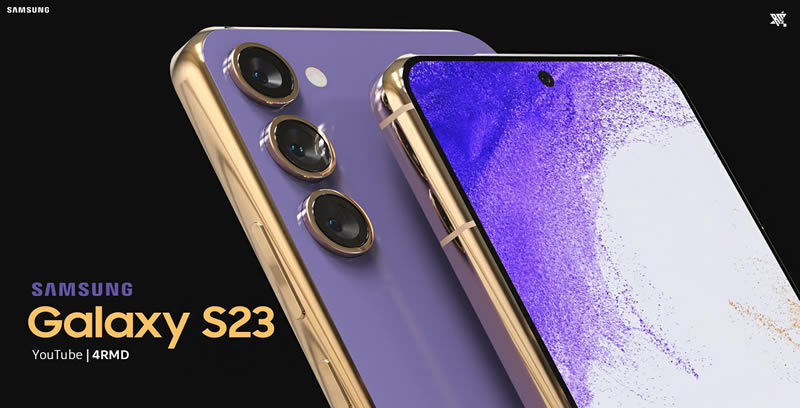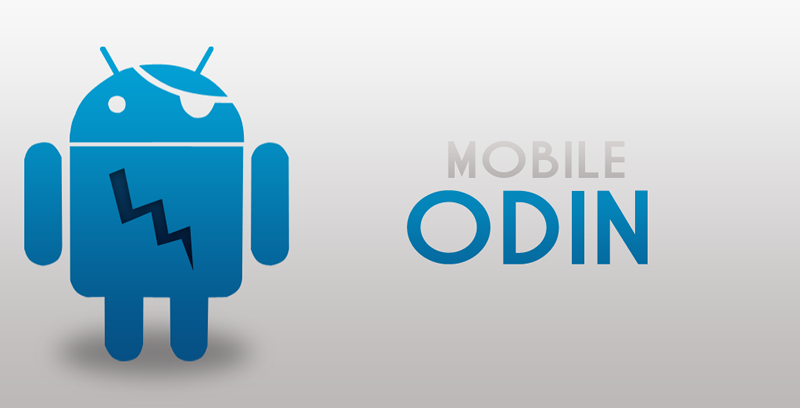Search result
 |
 |
|
this article is not available |
||
 |
 |
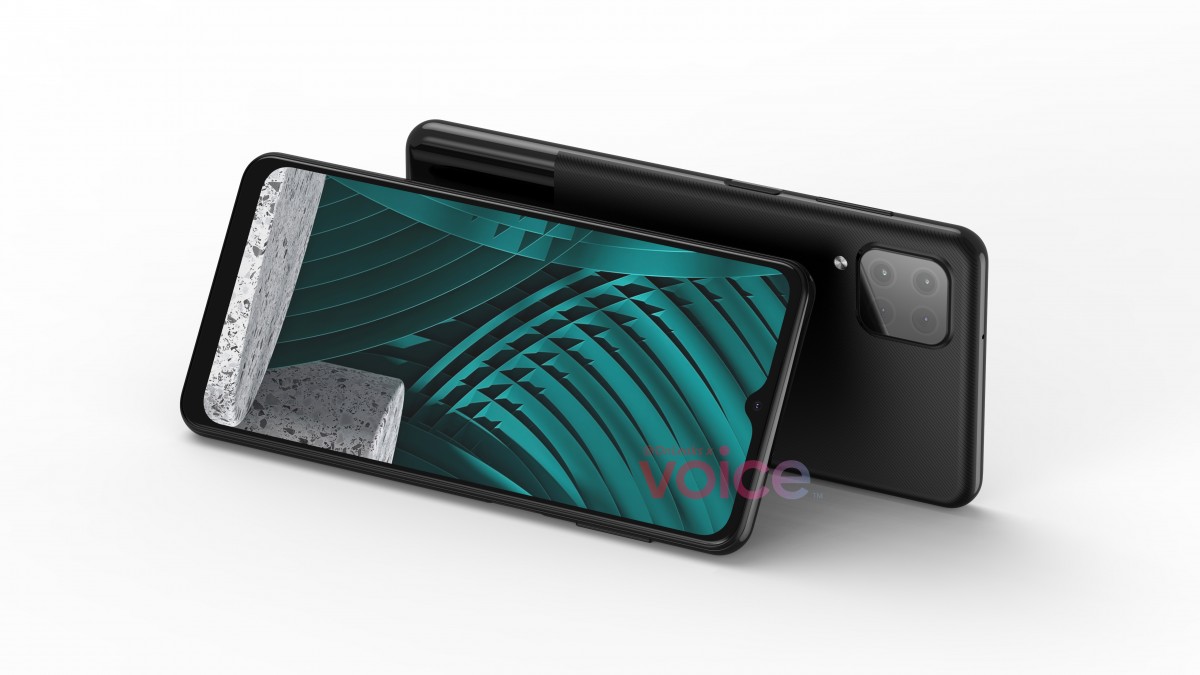
Samsung Galaxy M12 is due to an exceptional release next year, but the phone is already making waves in the tech industry due to its exceptional features that include a 7,000mAh battery. The Samsung Galaxy M12 is going to have the same battery as the M51. The phone belongs to the budget-category phone series and even fell into the entry-level in the category as well.
Recently, we have seen a leaked video uploaded by onLeaks, that is supposed to showcase the 360 views of the Galaxy M12. They had uploaded the graphical renders earlier and now they have come up with a short video that shows M12 from different angles. Due to the angles, the video was shot from, you can easily see a two-texture rear side that reflects light.
The Galaxy M12 will be 163.9 x 75.9 x 8.9 mm, a fraction narrower and thinner than the M51's 163.9 x 76.3 x 9.5 mm. Like it, it will have a plastic frame, which will help keep the weight down (but we're probably still looking at 200+ grams phones). As per rumors, the device will have a 6.5-inch diagonal display screen. The tech giant is working on two different models - one would be the global version and the one will target more of the Indian market.
Samsung Galaxy M12, as per leaks, has the waterdrop style notch to feature the front camera. On the rear side, the phone has a square model that comprises four sensors and a flash. The phone contains a side-mounted fingerprint sensor whereas Samsung Galaxy A42 5G has an in-display fingerprint sensor. There would be a speaker grille and a 3.5mm audio jack that sits alongside the charging port. According to reports, we can expect the phone to be released somewhere in the first quarter of 2021.

This year we witness a few affordable 5G smartphones but the cheapest one is yet to come. The latest Realme 7 will hit the market on November 30 and while it costs only $370, Amazon has an introductory price starting at $300. This makes it the cheapest phone with 5G network support in the UK. The Realme 7 has a 6.5-inch display with 1080 x 2400 resolution and a 120Hz refresh rate. The phone is powered by a MediaTek Dimensity 800U chipset. The phone will be available in two models for 6GB RAM and 8GB RAM with a 128GB internal storage option for both.
As per the listing, the phone has a 5,000mAh battery with 30W fast charging. The phone has an advanced 7nm Gaming Processor, delivering high-quality gaming experiences. It supports advanced 5G+5G DSDS technology, enabling seamless network switching. The phone has a 30W dart charge that brings an unparalleled charging experience. With a massive 5,000mA battery, you can watch movies, play video games all day long without getting worried about the battery. With a 5,000mAh battery you get 17 hours of YouTube, 25 days standby time, 35 hours call time, and 9 hours gaming time condition to fair usage.
With additional support for OTG reverse charging, you can charge your IoT device anytime, anywhere. Realme7 also has a super power-saving mode to kick-in when you fall below 10% battery. With this option, you can last up to 28 hours on standby with just a 10% battery. The phone has 48Mp primary camera lens, 8MP ultra-wide-angle lens, and a macro lens with a 4cm focus distance. The front camera has a 16MP in-display selfie lens with AI and beauty modes.
 |
 |
|
this article is not available |
||
 |
 |
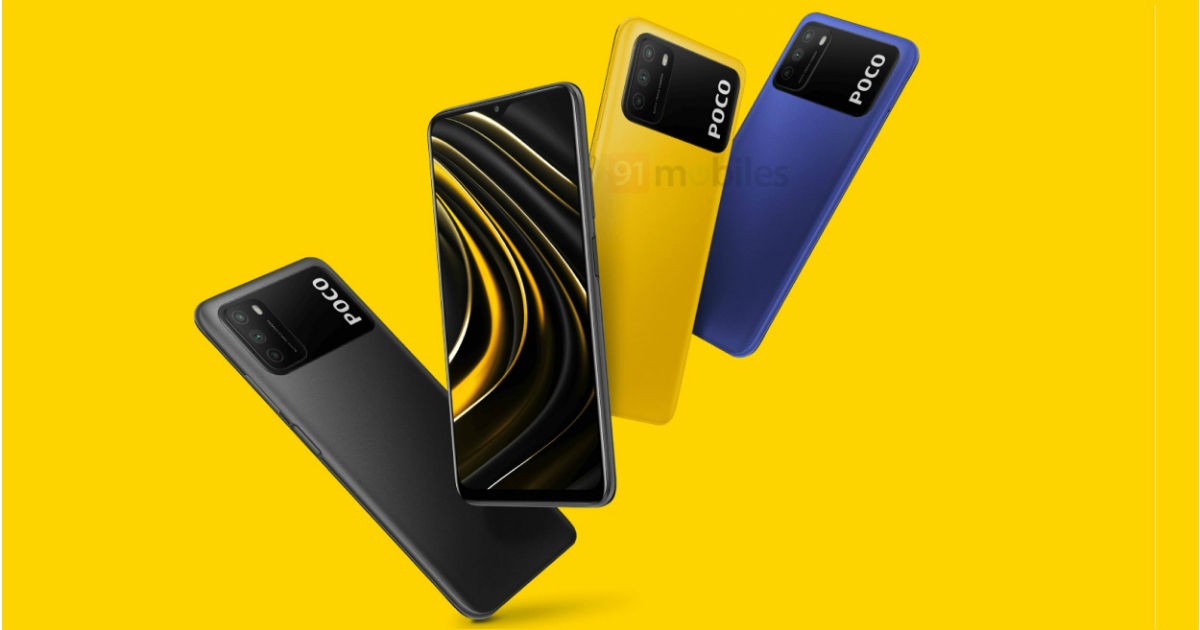
Today POCO organized an online event to reveal its latest smartphone in India. The company announced the POCO M3 smartphone which was already revealed for the global market in the last year. Only a few backs in November, POCO released M2 for the Indian market and now they have come up with its successor. The POCO M3 falls in the mid-range smartphone category and features a tall aspect ratio screen with a massive 6,000mAh battery. The best part about the phone is its price which is roughly starting from Rs. 9,999.
The phone has an IPS LCD panel of 5.3-inches. POCO didn't try anything crazy with the refresh rate and keep it to the usual 60Hz which helps the company to produce a lower-cost smartphone. The phone has a Full HD+ resolution of 1080 x 2340 pixels and a 19.5:9 aspect ratio. The device has a Gorilla Glass 3 protection for the front panel. The device comes with support for Widevine L1 for playback of streaming content from OTT platforms. The phone has a unique large-sized rectangle-shaped camera housing on the rear side of the phone that has a 48-megapixel primary camera with f/1.79 aperture and two 2-megapixel camera sensor for creating depth effects and taking macro shots without compromising the quality of the pictures.
The POCO M3 also supports photography features like AI beautify, AI scene detection, night mode, portrait mode, panorama, and time-lapse, etc. You can shoot 120fps slow-motion video on the phone along with 1080p video at 30fps. The POCO M3 has a snapdragon 662 processing chip under its hood along with LPDDR4x RAM and UFS 21 and 2.2 internal storage options. The POCO M3 comes with other features such as dual stereo speakers, an IR blaster, dual 4G VoLTE, Wi-Fi 802.11ac, Bluetooth 5.0, GPS, USB-C, and a 3.5mm headphone jack. The phone will be available in two variants in India with 6GB RAM and 64GB/128GB storage configurations. You can purchase the phone in Yellow, Cool Blue, and Power Black colors. The POCO M3 will go on sale starting from Feb 9 at 12PM local time in India on Flipkart. ICIC bank card owners would get a flat discount of 1,000 on the device.

A new year just started and Xiamoi seems to have big plans for the year ahead. The company is looking forward to launching more than ten 5G smartphones this year, and the new MI 10 series is expected to be released soon enough. Xiaomi has already confirmed that they are working on the MI 10 series, and references to the Xiaomi MI 10 and MI 10 Pro were found in the MIUI 11 v20.16 code base. The model numbers for MI 10 and MI 10 Pro are M2001J2C and M2001J1C respectively. Recently, there were rumors about the price and specs for the two 2020 Xiamoi premium smartphones on the internet and possibly we also got a hands-on look at the premium variant. The MI 10 and MI 10 Pro seems to differ in terms of battery capacity, memory, and camera setup.
In the last week of January, a Weibo tipster uploaded pics of what they called is the Xiaomi MI 10 Pro 5G. The images and packaging suggest that this could be the name of the smartphone, and the images show a few possible design details about the upcoming device. From the images, we can see that the device will have a curved display with a camera cutout on the left-hand side and a curved glass back panel. It also looks like the handset could feature a quad-rear camera featuring a 108MP primary lens and speaker grills at the top and bottom of the device. We can't quite make out whether the phone has an IR blaster, but we don't see a headphone port.
The picture only shows a mobile phone in one color - deep electric blue. But there would be other color variants that may we know about shortly. The Xiaomi MI 10 is believed to be more affordable than any other phone in the series. As per leaked specs, the MI 10 could feature a 6.5-inch 90Hz OLED display. Xiaomi has officially confirmed that the device will be one of the first smartphones to use the Snapdragon 865 silicon, meaning it will support dual-model 5G network connectivity. The Xiaomi MI 10 is also expected to have a quad-camera setup, with a Sony IMX686 sensor leading the pack. This is the same 64MP sensor featured on the Redmi K30. The other lenses are said to be including a 20MP lens, a 12MP telephoto sensor, a 5MP snapper, and hopefully a 30X digital zoom.

Last year's Redmi K20 Pro was inarguably one of the best flagship smartphones from the company. The device offered high-quality hardware at a very affordable price, making it one of the most popular smartphones of the year.
Xiaomi has officially confirmed on Weibo that the Redmi K30Pro will arrive in March, although we don't have a specific date yet. It also uploaded a poster showing a phone without a punch-hole camera in the top corners. The Redmi K30 Pro has expected the company's latest smartphone belongs to the flagship category, just like its predecessor K20 Pro.
We have heard a lot about the phone so far, and now we know that it is coming next month. The poster and the leaks also give hint that Redmi K30 Pro will feature a pop-up selfie camera instead of the K30's punch-hole cute-out. The picture doesn't show the whole display but it doesn't make any sense for having the selfie camera the bottom of the device. But it is far more likely that Xiaomi is reverting to the K20 family's pop-up camera.
A few rumors suggest that the device will feature a 64MP quad rear camera system. Other leaks suggest that the K30 Pro will be powered by a Snapdragon 865 and will support the 5G network connectivity. The device has a 4,700mAh battery that is sufficient enough to keep it on charge for a whole day even for the heavy user. Unfortunately, the phone doesn't offer wireless charging. We have to wait till next month to see what else the phone has to offer.

Honor is a leading smartphone brand affiliated with Huawei Group. Despite being an independent series, it is common to see Honor models sharing a similar design with their Huawei counterparts. The Honor 30 Lite 5G (Youth) is expected to launch under that flag name. The phone will be rebranded as Honor 30 5G lite for the rest of the world. Recently, we have seen some real-life images of the Honor 30 5G lite online that give us a glimpse of the rear design. The design look somewhere similar to Huawei enjoys Z 5G's design.
As per leaked images online, the device will feature a triple camera system housed inside a rectangular module placed at the top-left corner of the rear panel. The backside of the phone has an impression of sunbeams radiating from the bottom-left corner. As per rumors, the device will feature a 6.5-inch display which may likely hold a punch-hole design. The Honor 30 Lite 5G has a display with 1080 x 2400 pixel resolution, Full HD+, and a tall aspect ratio of 20:9. The refresh rate of the display is rumored to be 90Hz.
The phone is powered by a powerful MediaTek MT6873 SoC. So, far we don't know anything about RAM or storage configuration. The device holds a 4,000mAh battery that supports 22.5W fast charging. The phone runs on the latest version of OS - Andriod 10 out of the box. For the front camera, the device features a 16MP camera. The rear camera setup is made of a 48MP primary camera sensor teaming up with an 8MP and 2MP sensor.

Thanks to the numerous advancements in technology, mobile phones can now do many impressive things, apart from the standard calling and texting they were initially made for. However, one of the biggest issues which the manufacturers have failed to find a way around is battery life for these devices.
Although major brands always try to install longer-lasting batteries on their phones, taking care of them doesn't just stop there. Some activities can be carried out by the users, which tend to drain the battery quite fast. And there is nothing worse than looking down on your phone and realizing that it is running out the juice.
Fortunately, there are a few things that you can do to boost the battery life, hence extending the time the phone remains on. Before you start becoming desperate searching for a charger, here are five tips that will ensure that your phone battery lasts longer:
Mind your apps
Certain apps are notorious for being battery guzzlers, especially those that are heavy on graphics. Whenever you notice your battery is acting up, you should go to your smartphone's settings and identify the battery usage for each app.
The phone will always show you how an app is using up the juice, so if one of them tends to use too much of it, there are three options available. If uninstalling the app altogether isn't part of the options that you have, then you can try to stop it from being used in the background, or you can force it to stop.
Lose the location services

It is always easy to sell & trade in your phone online if you feel like the battery starts to act up. However, if you intend to keep it, you may have to consider losing the location services as they eat up a lot of your juice.
The use of the location or GPS feature on your phone is super helpful in finding out where you are and finding out your next step if you're lost. However, it is a heavy battery drainer, so you have to have them turned off whenever you don't need the service.
Reduce push notifications
Getting an instant notification from apps and your favorite websites ensures that you stay connected at all times. Who wouldn't want to be notified if their post on Facebook received a comment or like?
However, granting apps and sites the permission to send to you push notifications is a sneaky way to drain your battery; hence, you should restrict this from happening, and whenever you're expecting certain notifications, you should visit the website or app directly.
Avoid extremes of heat and cold
At some point, your phone might get too hot due to excessive usage or too cold when exposed to certain temperatures. The best thing to do is to try and regulate the temperature of the phone, lest the battery becomes damaged.
If it is too cold, you should consider taking it to a warmer place, and if it becomes too hot, you should remove it from direct sunlight or stop using it for a moment.
Turn the Wi-Fi connection off
Whenever your Wi-Fi is turned on, it'll always be on the lookout for new hotspots, and as you would imagine, this tends to eat up the battery. Only turn on the Wi-Fi on when you need it.
Conclusion
Having a poor battery can make your phone quite unreliable. Luckily, you can always sell & trade-in your phone online for a better device.
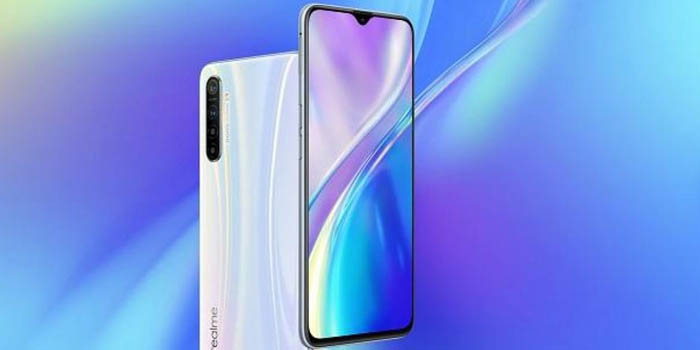
As per reports, Realme may soon launch three smartphones with model numbers RMX2121, RMX2176, and RMX2200 / RMX2201 have been certified by TENAA authority of China. TENAA has full specs and images of the RMX2176 phone. However, the Chinese telecom regulatory body has little information on the specs of the phone. A reliable tipster from China reported some information on the upcoming Realme 8 series phones.
According to the tipster, the upcoming smartphone is a standard Realme series and a higher model. The first device has a 4,300mAh battery and the second has a 4,500mAh battery. Both phones support 65W fast charging. The phone is also reported to be lightweight with long battery life. The Flagship variant is only 4,500mAh and 65W all series that don't exceed 200g. The Realme series has taken a slim profile serious with only 8.xmm phone size. From the weight and slim profile of the unknown series, we can safely assume that the tipster isn't talking about the Realme X series or V5 series as the upper-end variants of these sires houses a larger 4,980mAh rated battery.
The RMX2176 has an AMOLED display with a hole-punch design. It also supports a full HD+ resolution and a 20:9 aspect ratio. The phone is powered by a 2.4GHz octa-core processor that comes with 6GB and 8GB RAM options. The phone available in China may come in 128GB and 256GB storage options. The phone has a 32-megapixel front camera with a quad-camera system on the rear side. The rear camera system includes a 64-megapixel primary camera, 8-megapixel, a 2-megapixel, and a 2-megapixel phone. The phone runs on the Android 10 operating system is expected to be released in blue, white, and symphony color options.
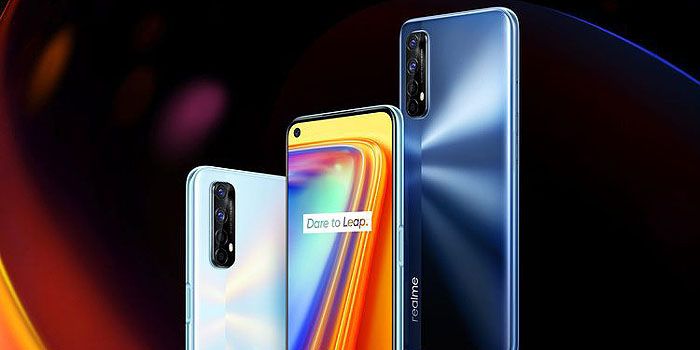
The realme, one of the largest growing chinese smartphone brands, will launch their next series in the UK on October 7. The series is specially designed to meet the needs of the younger generation who use smartphones to keep in touch with their family and friends. The phone comes with an ultra-long battery life, but more importantly, it features the ability of 65W fast charging. You can charge the 7 pro to 100% in just 34 minutes.
The phone is also the perfect device for people in love with mobile photography, featuring a Sony 64MP Quad camera. The camera comes with Starry mode, a new suite of advanced AI filters, and a 32Mp in-display selfie cam for beautiful looks. The phone is powered by a Snapdragon 720G processor. The device features a 6.4-inch Super AMOLED full-screen display, which is ideal for anyone interested in stunning and sharp display. In addition to the Pro model, the realme 7 comes with 5,000mAh battery and 30W dart charge, providing standby time of more than a month.
Realme 7 is powered by the world's first MediaTek helio G95 gaming processing, and offers high display refresh rate up to 90Hz and a 48Mp AI Quad camera with 16Mp in-display selfie camera. Realme 7 owns one of the most powerful game processing engines available in the market. Both phones have passed 22 major and 38 minor tests for the TUV Rheinland Smartphone Reliability Verification. The phone was tested for extreme cases and has been certified as both reliable and safe device for the consumers. You can check more detail on its release date on realme official Twitter and Facebook pages.

Last month Vivo launched its smartphone Vivo Y17 with water drop notch display and now there is another phone Vivo Y12 from the same series is joining the line. The specifications of Y12 has already been reported in the magazines. The rumors suggest that it will cost less than $200 to consumers. The phone has a 6.35-inch full view display with high definition resolution at 1080 x 2340 pixels. The waterdrop style notch allows phone to let user experience videos and games at an aspect ratio of 19.3:9. The appearance of the phone is similar to the Vivo Y15 and Y17 smartphones.
It is powered by MediaTeck Helio P22 processor that includes a 2.0 GHz octa-core processor. It will be available in market in two models such as 3GB Ram/32GB storage and 4GB RAM/64GB storage. The device comes with a microSD card slot which can be used to expand memory. Both of these variants will have slightly different price tags but still affordable. The Vivo Y12 has a non-removable 500mAh battery, dual-SIM option, Wi-Fi, Bluetooth, GPS, and 3.5mm audio jack.
The device is coming with FunTouch OS 9 UI based Android 9 Pie OS. It will be the most affordable phone with the triple camera feature in a mainstream series. It is expected to feature an 8MP f/2.2 aperture sensor, a 13-MP f/2.2, aperture lens and 2MP lens with f/2.4 aperture sensor. For front camera, it has f/2.0 aperture 8MP camera with Artificial Intelligence. For security, the Vivo Y12 is rumored to have the fingerprint scanner and face unlock features. This phone seems like packed with lots of features. If you are Vivo user, share your experience with this phone in the comments section below. You can tell us, what you like most about Vivo? And will you upgrade your phone to Vivo Y12?
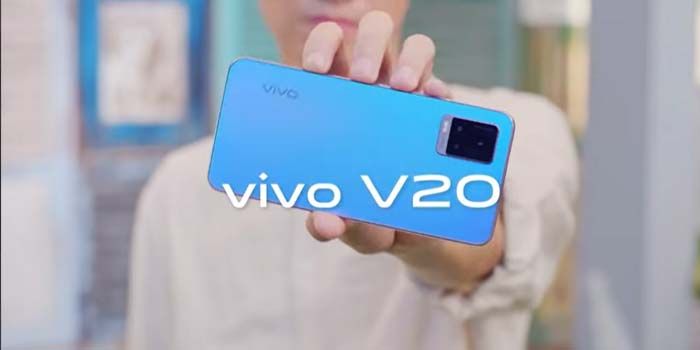
In recent years, mobile phone companies are focusing on promoting their series, aiming to offer different models of the same smartphones at different price tags. Along with Apple, other smartphones are releasing regular and pro models of the phone. Vivo has already launched the Pro models of its smartphones but now the first time, Vivo has come up with a special edition or SE with the launch of Vivo V20 earlier this month. The smartphone is placed below last month's regular model of Vivo V20 with modest hardware specs while playing big on design and camera.
The Vivo V20 SE is going to cost you Rs. 20,999 which makes it a direct rival of Poco X3, Redmi Note 9 Pro Max, Realme 7 Pro, Samsung Galaxy M51, and even the Vivo V20. The phone looks great just like the other phones in the series. The V20 SE features a plastic body and a mirror-like rear panel which is way too reflective and looks expensive. This also makes the rear a fingerprint magnet. The smartphone comes in two color options - Gravity black and Aquamarine Green. The Vivo V20 SE back panel houses a triple camera setup within a thin module.
You get two physical buttons for power and volume rocker on the right side of the phone. The SIM tray slides on the top and a 3.5mm headphone jack rests at the bottom part of the phone. When it comes to color variations and brightness, the SE didn't compromise a good and did a great job in both areas. The display is sharp and bright. Although there isn't much configuration option for display refresh rate.
The phone uses a Qualcomm Snapdragon 665 chipset processor, which is usually found in low-priced smartphones in 2020. The phone comes with 8GB of RAM and 128GB of internal storage, which can be further extended to 1TB using a microSD card. With this smartphone, Vivo isn't surely promising you a powerful phone but it is one of the smartphones available in the market that does what it is supposed to do.
The phone has a triple rear camera system with a 48-megapixel primary camera, an 8-megapixel ultra-wide-angle camera, and a 2-megapixel depth camera sensor. The phone is powered by a 4,100mAh battery bundled with a 33W flash charge charger.
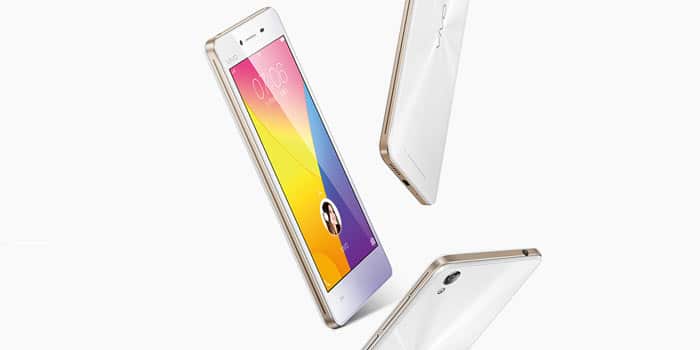
The Vivo Y51 is the last mid-range smartphone to be launched in India. The same phone was launched in Pakistan almost a month ago. However, the phone launched in India comes with slightly different specifications. The Vivo Y51 is now available in India and comes in two color options like Titanium sapphire and crystal symphony. You can purchase the phone in installments, Baja Finserve EMI enables users to buy a Vivo phone by paying Rs. 101, and Jio benefits worth Rs. 7,000.
Vivo Y51 features a 6.58-inch IPS LCD panel with a dewdrop notch. The tall aspect ratio screen has a resolution of 1080x2400 pixels. The phone is powered by Snapdragon 662 and runs 8GB of RAM. The phone uses native internal storage of 128GB which can be further extended using an external storage slot. The phone comes with a 16-megapixel selfie camera that comes with the Aura screen filter feature for shooting better selfies in low-light conditions. The rear panel has the same design as the Vivo x50 and V20 series. The phone features a triple-camera system with a 48-megapixel primary camera sensor, an 8-megapixel ultrawide camera sensor, and a 2-megapixel sensor for adding depth sensor.
The phone uses an intelligent super night algorithm that automatically brings light in the darkness to reduce noise and mitigate overlay. The result is sharp and bright images even in the low-light situation. It supports both the front and rear cameras - allowing you to take vibrant and sharp selfies and capture amazing photos. The FunTouch OS 11 based Android 11 comes pre-installed on the Vivo Y51. The smartphone offers other specs such as dual SIM support and uses 4G VoLTE, Wi-Fi 802.11ac, Bluetooth 5.0, GPS, USB-C for connectivity. It also offers a side-facing fingerprint reader for security measures, and a 3.5mm audio jack.
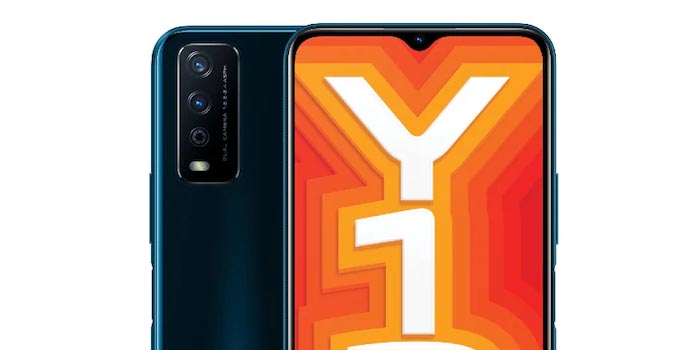
The new Vivo Y12s has been launched in India. The phone features a massive 5,000mAh battery that could be its main selling point at an affordable price. The new Vivo phone features a waterdrop display notch to feature the front-facing camera. The device comes in two different color options and has 3GB of RAM. The phone runs the Funtouch OS11operating system and competes with the latest Redmi 9 prime, Realme Narzo 10, and the Samsung Galaxy M11. Its predecessor Y12 was launched in India in mid-summer last year.
The phone has support for dual-SIM and runs on the Android 10 operating system out of the box. It features a 6.51inch HD+ display with IPS and an aspect ratio of 20:9. The phone is powered by Qualcomm Snapdragon 439 SoC with 3GB RAM. Earlier official reports mentioned that the device will be using a MediaTek Helio P35 processor but later on company released a press release to issue the correction.
On the rear side of the phone, Y12s features a 13MP primary camera sensor with an f/2.2 sensor and a 2MP secondary sensor with an f/2.2 sensor and a 2MP camera. For the front-facing camera, the phone features an 8MP camera sensor with f/1.8. Vivo Y12s comes with 32GB of internal storage that can be further extended using a microSD card. It offers connectivity options include 4G LTE, Wi-Fi, Bluetooth 5.0, GPS/ A-GPS, FM Radio, and a Micro-USB port. Sensors onboard include an accelerometer, ambient light sensor, magnetometer, and a proximity sensor. There is also a side-mounted fingerprint sensor.
Vivo Y12s features a massive 5,000mAh battery that has supports 10W fast charging. The device is lightweight and weighs only 191 grams. The phone is up for sale for only Rs. 9990 for the 3GB RAM and 32GB internal storage. You can purchase the phone in Phantom black and Glacier blue colors. You can order the phone online at its official website, Amazon, Flipkart, Paytm, and across the country from its official retail stores.
Vivo has officially announced that it will be launching a new smartphone called the Vivo Y72 5G on March 22 starting release from Thailand. The official poster show off the design of the device. At the same time, it has appeared on the Google Play Console. Ahead of its launch, a Thailand blogger at MXPhones has unboxed the devices and uploaded a preview of the box contents along with the images of the device.
So far, Vivo Y72 5G will be the first phone by the company to have a 5G network capability. The device features a front-camera inside a teardrop notch. According to the Google Play console listing, it features a Full HD+ resolution of 1080x2408 pixels and a 440ppi pixel density. The rear side of the phone has a vertical camera housing featuring a 64MP primary camera.
As per MXPhones, the device box contains Vivo Y72 5G with blue-pink gradient, a charging adapter, USB-C cable, Earphones(3.5mm jack port), a soft case (TPU, Silicone material), and Slim Ejector Pin. The phone has power button/fingerprint scanners on the right side along with the volume buttons, a SIM card tray on the top side, and USB-C, a 3.5mm audio jack, a primary mic, and speakers to the bottom.
Vivo Y72 5G features a 64MP primary camera, and two ultra-wide sensors of 8MP, and a 2MP macro sensor. The front camera has a 16MP f/2.0 sensor. Other specs include 8GB RAM, 128GB storage, WI-FI 5GHz, and Bluetooth 5.1. The phone is powered by MediaTek Dimensity 700 processing chip and a 5,000mAh battery with 18W fast charging support. The Vivo Y72 5G runs on Android 11 and Funtouch OS 11.1 out of the box. The phone will be releasing on March 22.
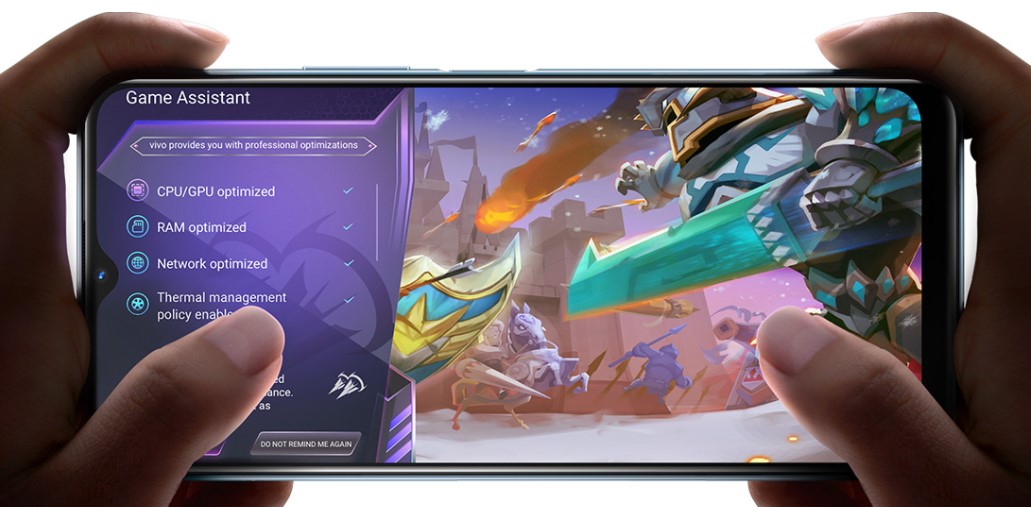
Vivo Y12s has been launched in Vietnam already as an upgrade to its previous year's Y12s model. The new phone has the same exterior with a water drop-style display notch and dual rear cameras with specialized effects. However, there is a major upgrade in terms of processing ability as the 2021's model comes with a Qualcomm Snapdragon 439 SoC. the original Vivo Y12s were powered by MediaTek Helio P35 SoC, though its Indian variant had the same Snapdragon 439 processing chip.
The new Vivo Y12s 2021 version has been priced roughly at Rs. 10,500 for the single 3GB RAM and 32GB internal storage. You can purchase the phone through online websites in Vietnam. However, according to reports, the device will be available in other markets in a few weeks. The original Vivo Y12s was unveiled in November for the global market but debuted in India in January with the Snapdragon 439 processor.
The phone runs on Android 11 with Funtouch operating system 11 on the top and features a large 6.51-inch HD+ IPS display with 720 x 1,600 display with a 20:9 aspect ratio. The phone is powered by an octa-core Qualcomm Snapdragon 439 SoC, along with 3GB of RAM. The phone features a dual-camera system on the rear side that houses a 13-megapixel primary camera sensor with an f/2.2 lens and a 2-megapixel depth sensor with an f/2.4 camera sensor. It also includes an 8-megapixel selfie camera sensor with an f/1.8 lens.
The Vivo Y12s comes with 32GB internal storage that can be further extended via microSD card through a dedicated slot. The phone has connectivity options including 4G LTE, Wi-Fi, Bluetooth v4.2, Micro-USB, and a 3.5mm headphone jack. The phone also uses sensors onboard including an accelerometer, ambient light, magnetometer, and a proximity sensor. The phone is available in Glacier Blue and Phantom Black colors. The device also features the side fingerprint scanner along with a power button so you can power on and unlock your phone at the same time. The phone allows you to unlock from a bright screen in 0.23 seconds - almost too fast to see any difference at all.
 |
 |
|
this article is not available |
||
 |
 |
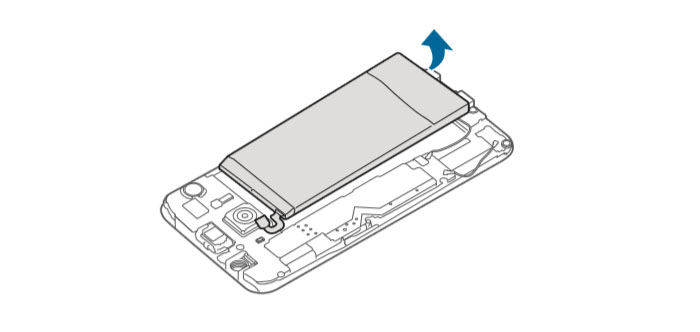
In order to make the Galaxy S6 / Galaxy S6 Edge premium build design a full-metal unibody sleek design, Samsung had to sacrifice the user-replaceable battery and the micro SD slot as well, the un-removable battery is annoying to most of the users, So we decided to publish Samsung's official Instructions on How to safely remove the Galaxy S6 Battery. The instructions are on the PDF file on the source link below.
The step-by-step instruction is somewhat vague in the beginning with step 2 being simply Remove the back cover. Experience from previous smartphones with similar construction points to a heated-air gun to melt the double-sided adhesive and guitar picks to separate the panel, all accompanied by an appropriate amount of patience.
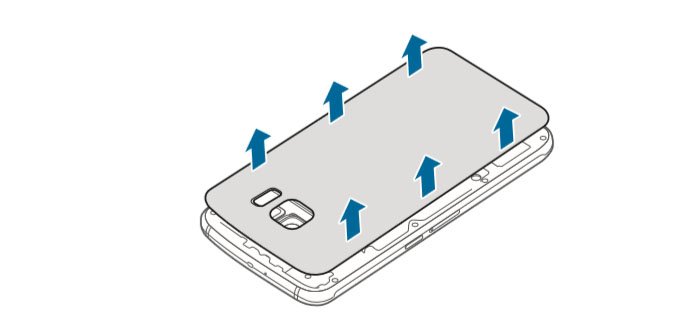
Once that's out of the way, no less than 13 screws need to be undone to remove a circuit board allowing access to the battery. To sum it all up, the possibility is there, but you wouldn't want to do it yourself, and certainly not on a daily basis.
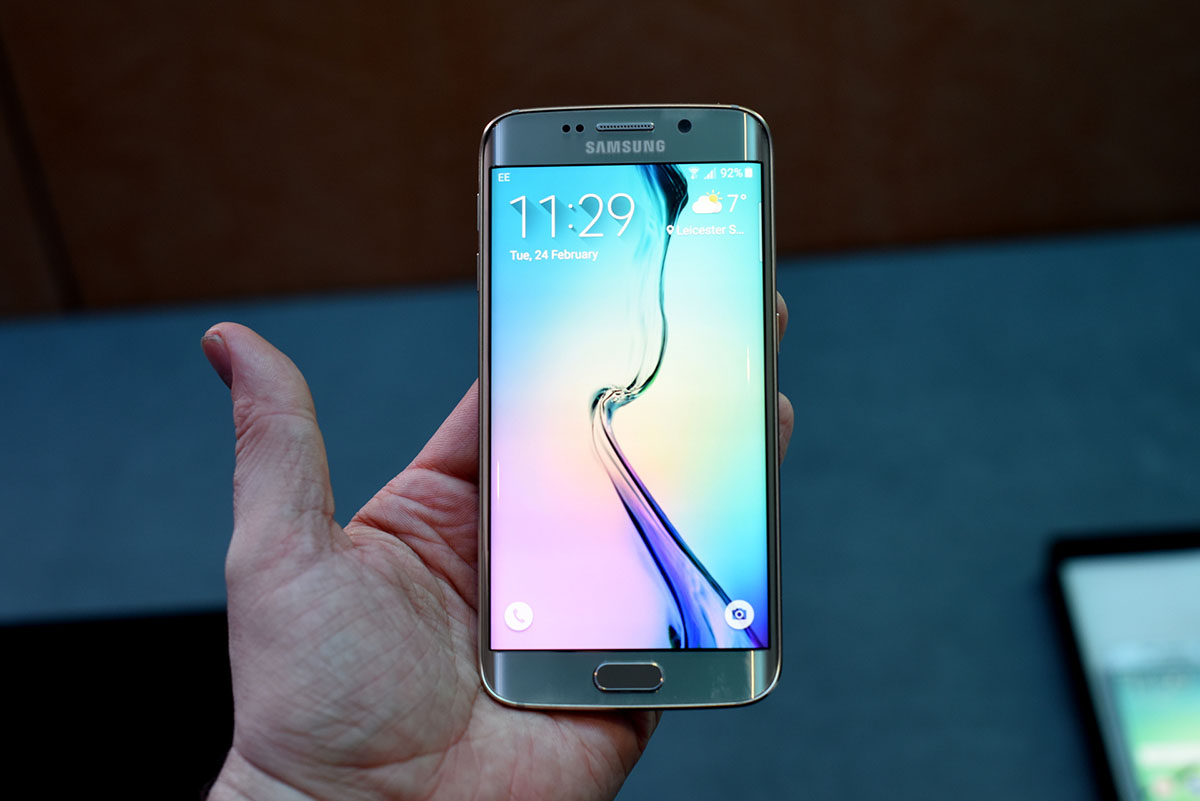
Reports about the Samsung Galaxy S6 PLUS has been leaked online. The device will be a high-end "PLUS" version of the current Galaxy S6 flagship.
The Samsung Galaxy S6 PLUS Model number is (SM-G928) and will be 151mm tall, 73mm wide with 5.5" QHD SuperAMOLED display. The device is also reported be powered by the hexa-core Qualcomm Snapdragon 808 mobile chipset (10-cores unit). The rest of its rumored specs include 32GB of built-in storage,16MP main camera, and 3,000 mAh battery.
Overall, the Galaxy S6 Plus looks set to square off directly against the next large-screen iPhone, which will also debut in September. Stay Tuned for more details about the device going forward.
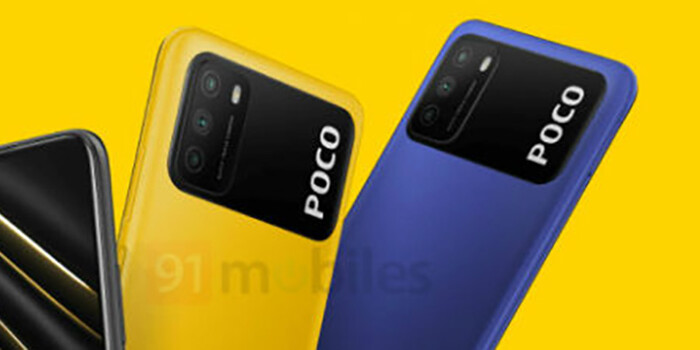
POCO has been focusing on one smartphone for nearly two years, but now the company has tried to add multiple smartphones to its existing and new series in 2020. They have introduced a new smartphone - called POCO M3, which is a direct successor of the relatively recent smartphone POCO M2. Usually, the successor phones take a similar design but the company has completely redesigned the new phone on the rear side and put a new chipset from Snapdragon instead of choosing a chip from MediaTek.
The most obvious change in the M3 is the rear design. The brand completely redesigned the back design, making it more of today's design and youth-centric. The design looks expensive as compared to the price tag which is really a refreshing option among its cheaper-looking rivals. The camera is placed in a rectangular shape housing on the top left corner like many other budget series mobile phones, however, the camera unit is placed inside a larger, all-black housing with a big POCO logo on the right side in the vertical fashion. The phone features a large 6.53-inch IPS LCD waterdrop/ dot-drop display as its predecessor with FHD+ resolution and has a gorilla glass protective cover to save the phone in case of accidental fall. The phone also comes certified with TUV Rheinland's low blue light certification.
The POCO M3 comes with a large 6,000mAh battery inside that should keep you going for more than a day. This is a significant upgrade from the 5,000mAh battery found on the POCO M2. And what's surprising is that both phones have the same weight despite of the battery difference. The phone still supports only 18W charging, so it should take even longer to fully charge this battery.
The previous model had a quad-camera system with the ultra-wide-angle sensor which the company decided to skip this time, leaving you with a triple camera setup instead of a quad-camera setup found on its predecessor. But to compensate for the loss of an important camera sensor, M3 has come with a larger 48MP f/1.79 as a primary camera sensor. There are two other camera sensors, a 2MP macro camera sensor, and a 2Mp depth sensor. On the front side, you get an 8MP f/2.0 selfie shooter. The phone is running MIU12 for Poco, which is based on Android 10. The phone is available with 4GB RAM and 64GB and 128GB internal storage for $129 and $149 respectively.
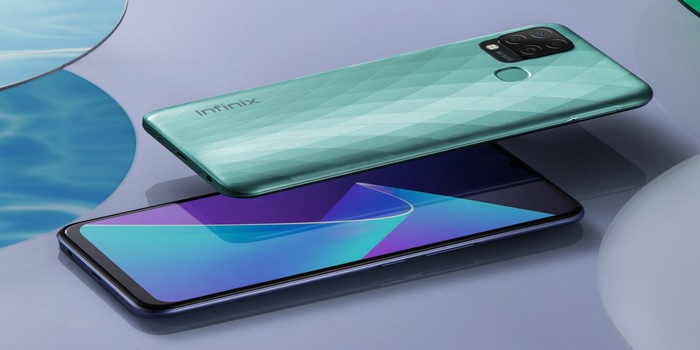
Infinix revealed its latest smartphone Infinix Hot 10S on 22nd April 2021 and now the phone is available in India with a 6.82-inch display screen with a resolution of 720x1640 pixels, an aspect ratio of 20.5:9, and 171.5 x 77.5 x 9.2 mm (6.75 x 3.05 x 0.36 in) dimensions. The phone is powered by 6GB of RAM and runs the latest stable version of Android operating system - Android 11. The phone is from its budget-friendly hot series and will be available online and offline from May 27.
The Infinix Hot 10S uses a water drop notch design on the top of the display. The device uses MediaTek Helio G85 (12nm) chipset, Octa-core (2x2.0 GHz Cortex-A75 & 6x1.8 GHz Cortex-A55) CPU, and Mali-G52 MC2. The phone has a microSDXC (dedicated slot). The phone comes in 64GB/4GB, 64GB/6GB. 128GB/4GB, and 128GB/6GB RAM and internal storage configuration. Connectivity options on the Infinix Hot 10S include Wi-Fi 802.11 a/b/g/n/ac, GPS, Micro-USB, FM radio, 3G, and 4G (with support for Band 40 used by some LTE networks in India).
You would find accelerometer, ambient light sensor, compass/ magnetometer, gyroscope, proximity sensor, and fingerprint sensors on the phone.
The phone uses a 48MP primary camera, a 2MP depth sensor, and a third unknown camera sensor with quad-LED flash, HDR, and panorama features. The selfie camera uses an 8MP wide camera. You can shoot HD video at 30fps with a front and rear camera. The device also features a loudspeaker and a 3.5mm jack. The phone is available in Black, Purple, Morandi Green, Heart of Ocean colors and priced about .110 EURO.

Who could forget the Nokia 3310? And then Nokia just kind of disappeared from the landscape of the smartphone industry. The good news is, Nokia is back. And this time, with a big screen, big battery and small price. The company is claiming for two-day long battery time. It seems too much but we have seen Nokia handset with a long battery time, so we can trust it. The Nokia 3.2 is available to buy from Amazon starting from £129.99 which makes it highly affordable smartphone. There are two color options: black or grey steel.
With this price tag, you get 6.26-inch HD display, Snapdragon 429 chipset, 2GB or 3GB of RAM, 16GB or 32GB of storage and Android 9 Pie. You can go for the expensive model tough, with 3GB of RAM and 32GB storage, if you are like me who download so many apps at a time and keeps hundreds of pictures in their smartphone. Also, 3GB of RAM should give the Nokia 3.2 a little more speed when it comes to playing video games or using apps, although don't expect too much speed as it is an only entry-level smartphone. Nokia is targeting budget-conscious consumers who don't use their devices much.
The selling point for Nokia 3.2, however, is its two-day battery time even with a large screen. The battery is 4,000mAh and with an only 720p display, the power consumption demand isn't much. Nokia is by far the most affordable rival to the Moto G in the UK. It has AI features like biometric face unlock that is pretty cool for such a modest device. You can also use Google assistant - giving you options to set timers, schedule reminders, play music or ask for the nearest sushi restaurant. .If you are a Nokia user, let us your experience with Nokia devices.

Perhaps it is the price factor, or increasing competition, the phone manufacturers are launching smartphones in the mid-range market which brings us to the latest phone - Nokia 7.2, another budget-friendly phone from Nokia. Since it's a phone by Nokia, we can expect decent hardware specs and a great battery life. The price tag falls somewhere between Moto and OnePlus in terms of its overall aesthetic appeal. The Nokia 7.1 appeared last year and now we have its successor. It has a matte back and available in green, charcoal, and white colors. The display is 6.3-inch and has a 1080 x 2280 pixel resolution.
The screen is LCD and reasonably bright but you can't compare it with a very high-end display, though the difference isn't noticeable with naked eyes. The bezels are thicker than you would see on the recent phones, and the notch cuts into the screen a little awkward, but you have to bear in mind how affordable this phone is.
The phone is powered by snapdragon 660 and has 4gB or 6GB of RAM, paired with 64GB or 128GB storage, which is expandable via memory card. With a new phone, it seems responsive and fast, even when switching between several apps, you may feel some delay. The device runs on the Android 9 Pie out of the box and ensures Android updates for two years, and security updates to keep your phone protected for another year. The Nokia 7.2 has a triple-lens 48MP+8MP+5MP camera that can get some very good shots in well-lit situations, and some satisfactory shots in low light, though noise can start to be a problem as the illumination wanes.
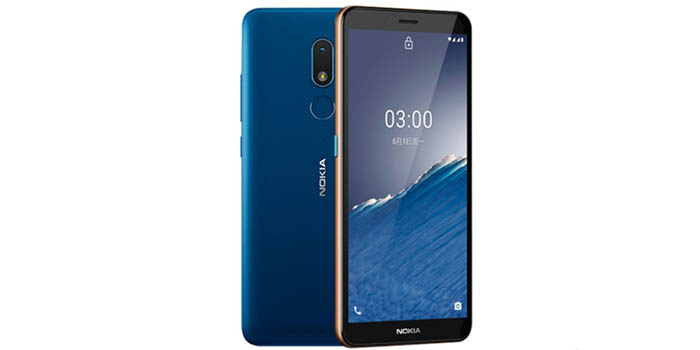
Nokia C3 is one of the most budget-friendly smartphones you can find today and it just got released in China. It comes with a relatively large display and old-fashioned design with thick bezels on the top and bottom. The phone is powered by an octa-core processor that has a single camera on the rear side. The Nokia C3 is up to sale at CNY 699 or roughly $100 for the sole 3GB RAM and 32GB storage. It comes with Nordic blue and gold sand color options. It is currently available for pre-orders in the country and will be sold in markets starting August 13.
The Nokia C3 is a dual-SIM phone that runs on the latest stable version of Android with a custom user interface on the top. It features a 5.99-inch HD+ IPS display with 400 nits of brightness. The phone is powered by an octa-core processor, believed to be from Unisoc, and paired with 3GB RAM. The phone has a single 8-megapixel camera on the rear side with an f/2.0 lens. The device also has a LED flash. For selfies, the phone comes with a 5-megapixel image sensor with an f/2.4 lens, housed in the giant bezel on the top of the display.
The Nokia C3 comes with 32GB of onboard storage that is expandable up to 128GB using a microSD card slot. The phone uses Wi-Fi 802.11 b/g/n, 4G, Bluetooth v4.2, GPS/ A-GPS for connectivity, a 3.5mm headphone jack to listen to music or radio, and a Micro-USB port for charging. The phone is powered by a 3,040mAh battery with 5W charging that can sustain a single charge up to 31 hours of audio playback and up to 7 hours of video playback as claimed by the company.
The sensors on the Nokia C3 include an ambient light sensor, proximity sensor, acceleration sensor, and a fingerprint scanner on the back. There is also an Xpress button that can be mapped with a feature or an app for quick access. The phone measures 159.9x77x8.69mm and weigh 184.5 grams.
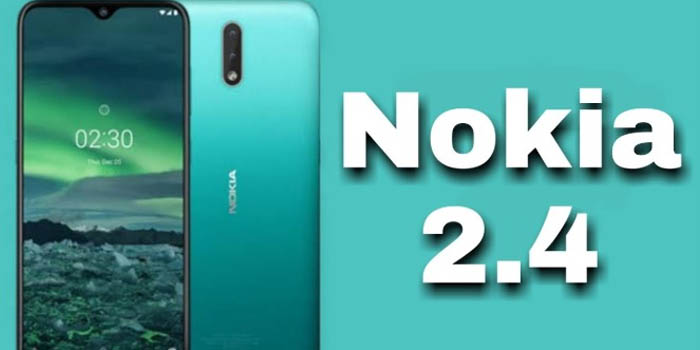
Nokia is known for its affordability and extraordinarily long battery life. And now at the end of the year, HMG Global released another smartphone in the budget category- known as Nokia 2.4. The smartphone runs the latest stock Android 10 operating system out of the box and the latest entry in the budget-category by the company. The phone is an affordable handset and its specifications also fell in the same category.
It features a 6.5-inch HD+ display with 700x1600 pixel resolution, which is good enough to watch videos or play games. The device has a water drop notch in the front. It is powered by MediaTek Helio P22 SoC and is run by a large 4,500 battery pack with the regular 5w charging support which definitely disappoints users looking for fast charging.
The phone isn't too slow or too fast. It features 3GB of RAM which is great if you are a medium level user. The phone is available in two variants with either 32GB or 64GB of internal storage, which can be further extended via a microSD card slot. Since the device runs on Android One, it runs on the stock Android 10 OS, and most properly receives the Android 11 update as well.
The phone has a dual-camera setup on the rear side, with a 13-megapixel primary sensor, and a 2-megapixel depth lens for portrait shots. The selfie camera is a 5-megapixel camera and the device sports the usual connectivity features like 4G LTE, Wi-Fi, Bluetooth 5.0, micro USB port for charging. The fingerprint scanner is placed on the rear side with a separate physical button for Google Assistant. The phone only weighs 189 grams. Nokia 2.4 will be available in India for 10,399 INR (estimated around $140). You can purchase the phone in the dusk, Fjord, or charcoal color. It is currently available for pre-booking throughout India, and so far, we don't have any official date when it will hit the market. So, stay tuned for more updates.
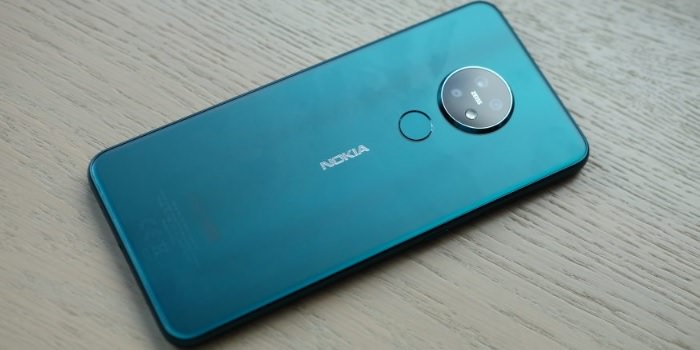
Nokia 5.4 is the latest upcoming smartphone to be launched and just after the phone was seen on the US FCC website, its specs surfaced online. According to the leaks, the smartphone is going to feature an HD+ display and will be powered by an octa-core Qualcomm Snapdragon 662 processing chip. The Nokia 4.2 specifications were leaked by the website Mysmartprice along with the tipster Sudhanshu. These specs are the same as were introduced by the US FCC site last week that highlighted a new Nokia phone with a model number TA-1333, which is believed to be the said smartphone.
As per the reports, the Nokia 5.4 comes with dual-SIM and features a 6.39-inch HD+ display with a 19:9 aspect ratio. The phone is also said to have the Qualcomm Snapdragon 662, with 4GB of RAM and 128GB of internal storage. You can extend the internal storage via a microSD card up to 256GB via a dedicated slot if needed. Further, the Nokia 5.4 is said to feature the quad-camera setup at the rear side that included a 48-megapixel primary camera sensor, a 5-megapixel secondary camera sensor, with an ultra-wide-angle lens, a 2-megapixel macro shooter, and a 2-megapixel depth sensor.
For selfies, the Nokia 5.4 is rumored to have a 16-megapixel selfie camera sensor on the front side. The camera could be featured on a hole-punch display cutout. The phone runs Android 10 out the box and is powered by a 4,000mAh battery. For security, the phone has integrated a fingerprint sensor as well as an accelerometer, ambient light, and a proximity sensor. The phone offers options for Wi-Fi Bluetooth, USB Type-C, and a 3.5mm headphone jack for connectivity and audio.
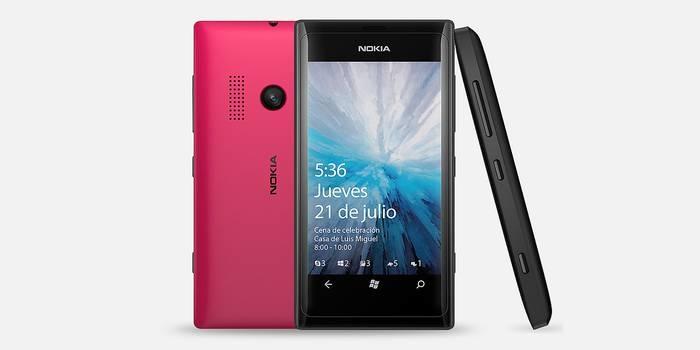
2020 has ended and we have seen many new smartphones by some major and small mobile phone manufacturers. In the smartphone department, Nokia started last year with the launch of Nokia C2, which was then followed by Nokia 5.3, Nokia 8.3 5G, and Nokia C3. The Nokia 2.4 and Nokia 3.4 were released in September. They completed their launch of new smartphones with the Nokia C1 plus and Nokia 5.4. So, we got three devices from the C series, two from the 5 series and one from the 1,2,3, and 8-series each. If we keep the count of last year's smartphones we might get to see the new Nokia 6,7, or 9 this year before anything else.
As the last year was about to end, there was some news about three new Nokia batteries being certified by the authorized bodies. According to the new certifications, the future Nokia smartphones might carry the 3,900mAh, 4,470mAh, and 5,050mAh batteries. The first two models were certified by TÜV Rheinland Japan and the latter by Element Materials Technology.
At least three new Nokia smartphones can be expected based on these certifications. We are not sure if there will be only three models or more that will appear as Nokia 3.4 and Nokia 5.4 share the same battery, so we can expect the same for the future smartphones as well. Currently, the maximum battery capacity supported by Nokia smartphones is 4,500mAh battery, that too only in Nokia 8.35G and Nokia 2.4. Hence, a 5,000mAh+ will be the first significant upgrade Nokia phones are going to have this year. Hopefully, it will come with the fast charging option. We don't know what next year will bring for us but I think it is time for Nokia to introduce bigger batteries and fast-charging technology to more devices.
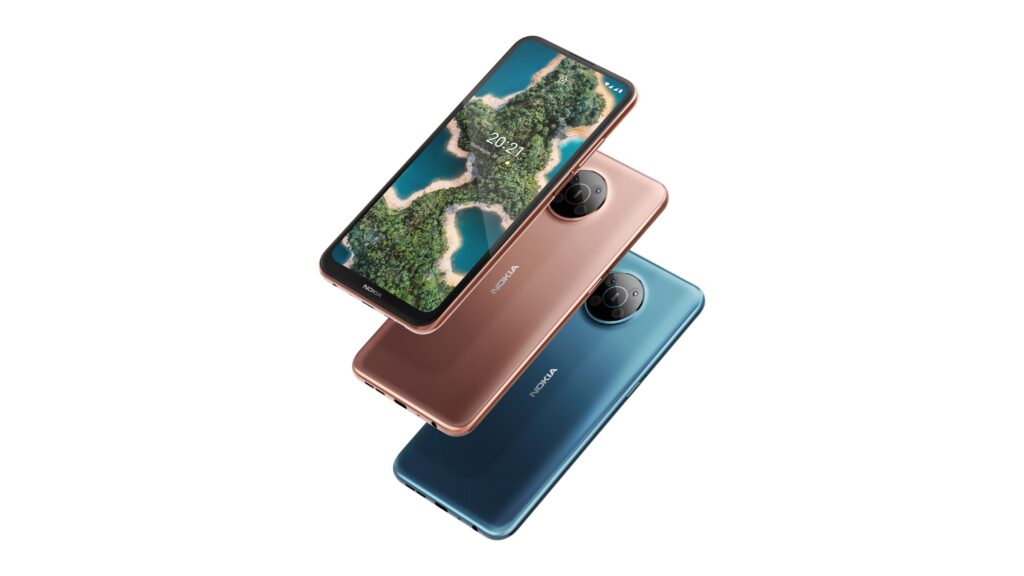
HMD Global has officially made an announcement about its first-ever Nokia-branded 5G smartphones in the budget category. These phones are named Nokia X10 and Nokia X20. These devices feature the almost similar set of hardware specifications other than a few areas like camera, storage, and colors. Let us have a deeper look at their specs, price tag, and availability in the region.
Recently launched budget smartphones Nokia X10 and Nokia X20 have a great build made by a polycarbonate material. Both of these devices share an exact 6.67-inch LCD panel on the front with a resolution of 2400 x 1080 pixels (FHD+), 20:9 aspect ratio, 450 nits peak brightness, and a punch-hole featured in the center of the display. Both of them measure 168.94 x 79.7 x 9.1mm but the Nokia X10 is slightly lighter at 210g compared to 220g weight of Nokia X20.
Nokia X10, X20 are powered by a Qualcomm Snapdragon 480 processing chip. The Nokia X10 comes with two memory configurations - 4GB/6GB RAM and 64GB/128GB internal storage. On the other hand, the Nokia X20 comes with 6GB/8GB RAM and 128GB storage configuration. Both devices run Android 11 with Android One user interface on the top. The tech giant decided to offer 3 years of Android updates and security patches for both of these devices which is really great if you like to keep your phone for at least 3 years with you. The phones are powered by a reasonable 4,470mAh battery that comes with 18W fast charging support. But unlike other budget smartphones in the same category, you don't get the charger in the box and have to purchase one separately.
Other features include USB Type-C port, a dedicated Google Assistant key, a MicroSD card slot, 3.5mm headphone jack, and a fingerprint sensor placed on the side of the device. Nokia X10 is available in forest and snow colors, while Nokia X20 is available in Midnight Sun and Nordic Blue. The Nokia X10 is priced at 309 euro and Nokia X20 is priced at 349 euro. The latter will hit the market in May, followed by the former in June.
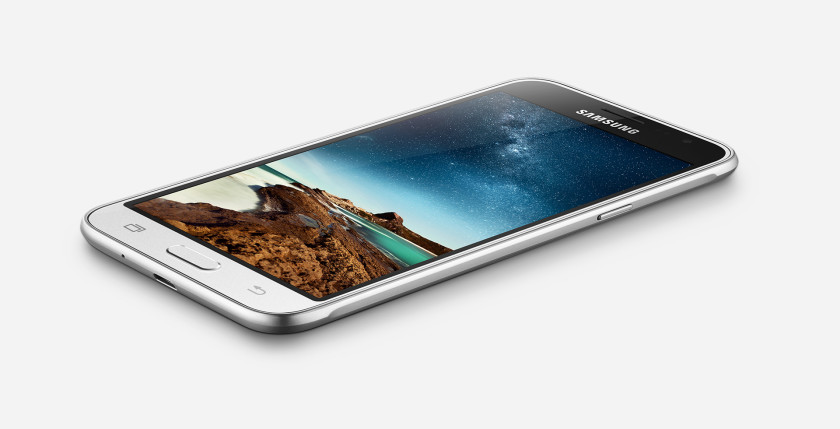
Samsung has added a new budget phone to the J series in the Chinese market after making many unofficial appearances. In terms of specifications the new phone, Galaxy J3⑥ is almost similar to Galaxy J5 and Galaxy On5 (launched in India this month). It is available in the chinese website and in every listing ⑥ is listed in the title.
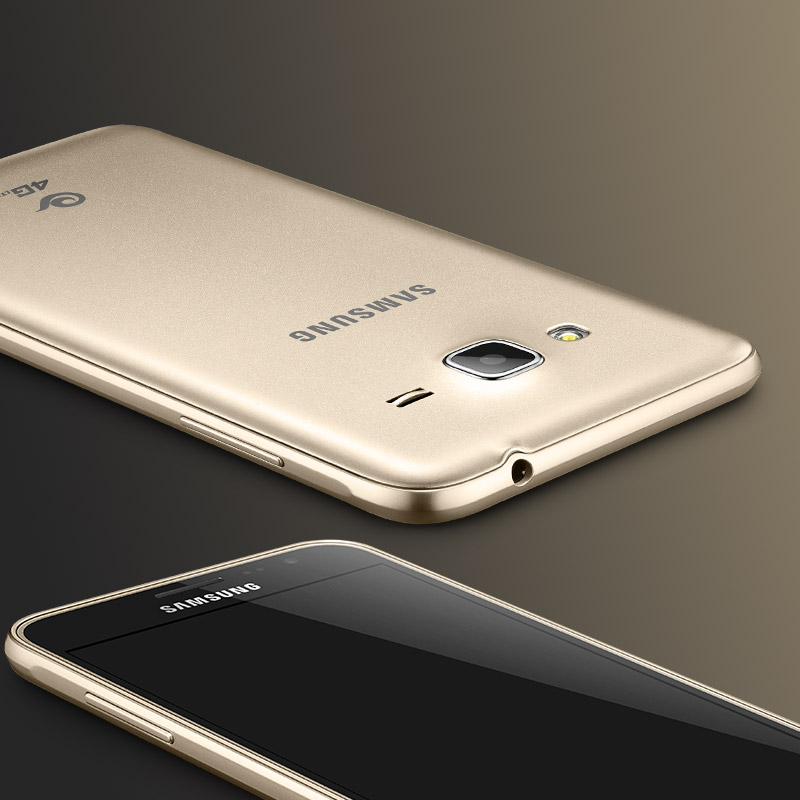
A Super AMOLED 5-inch HD display and big battery (2,600 mAh) are the most important features here, given that they are the two features that aren't quite common on budget devices. The J3⑥ sports an unspecified quad-core processor clocked at 1.2GHz, 1.5GB of RAM, an 8-megapixel rear camera, a 5-megapixel front-facing camera, and 8GB of expandable storage. The phone's width is of 7.9 mm, which also matches with the J5.
The software is powered by Android 5.1.1 Lollipop along with Samsung's latest TouchWiz UX, with option to remove preinstalled apps (facility is available only in China). The Korean company is also giving 72 yuan (roughly $11) worth of downloadable games prepackaged in the device, although the price of the handset is not yet out. It is expected that the price should be close to $200. The phone is exclusive to China Telecom, and you can check out the list of stores to find out the availability from the link given below:
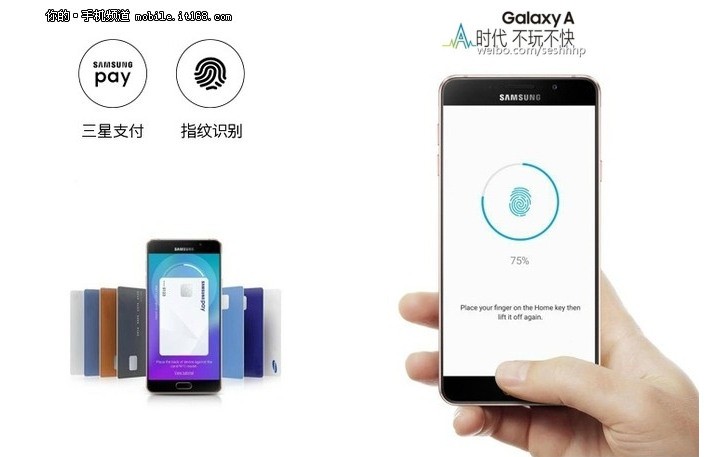
Samsung Galaxy A9 will be released following its predecessors like A3, A5, and A7 models of the revamped Galaxy A (2016) series. The images of the smartphone were leaked via official promotion and is expected to be available in the market this month.
The Galaxy A9 will have a 6" Super AMOLED screen of 1080p resolution and a Snapdragon 620 chipset backed by 3GB of RAM will power the phone. The 620 platform has a powerful octa-core 1.8GHz processor with 4x Cortex-A72 and 4x Cortex-A53 cores, and the GPU for graphics is Adreno 510.
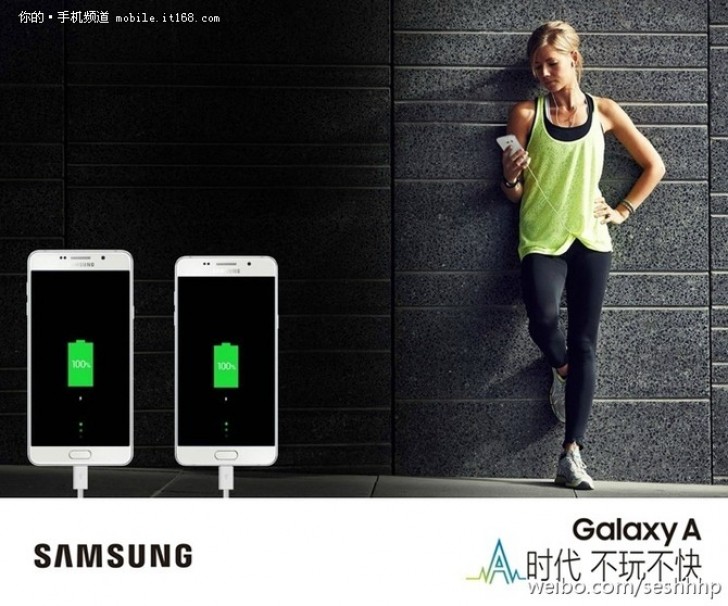
The Galaxy A9 will be following the suit of the smaller A3, A5, and A7 from the 2016 series and will be built with a metal frame and dual 2.5D glass panels.
All other specifications of the Galaxy A9 are the following: a 13MP camera in the back with optical image stabilization and bright f/1.9 aperture. The 8MP selfie camera will also support panoramic pictures, 32GB expandable storage, LTE Cat.7 connectivity, and a 4,000 mAh battery.
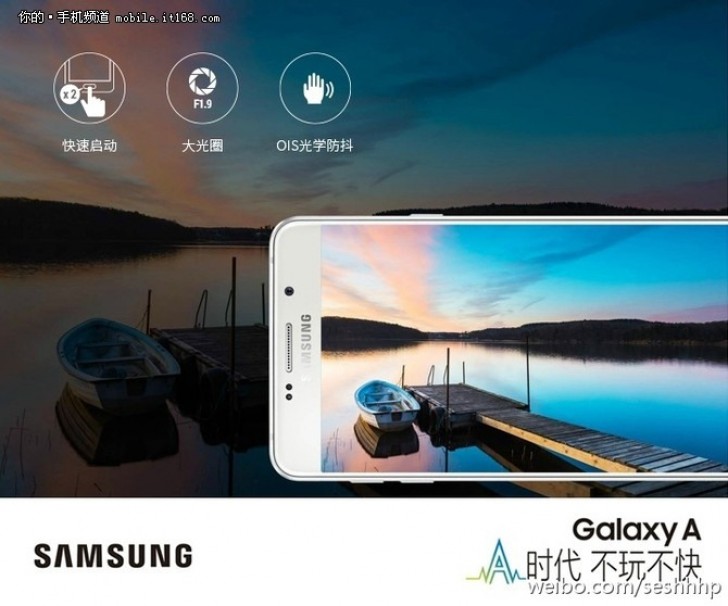
With this type of stellar specs, the Galaxy A9 is also expected to feature power bank capabilities. Those would be supported natively by Android 6.0 Marshmallow, but the Galaxy A9 will be released with 5.1.1 Lollipop, which makes it difficult to confirm the availability of this feature.

Samsung Galaxy A9 is supposed to go official very early and be available for consumers in Christmas or in early January. The price in China will be more than CNY 3,000, which implies it will be more than €430.
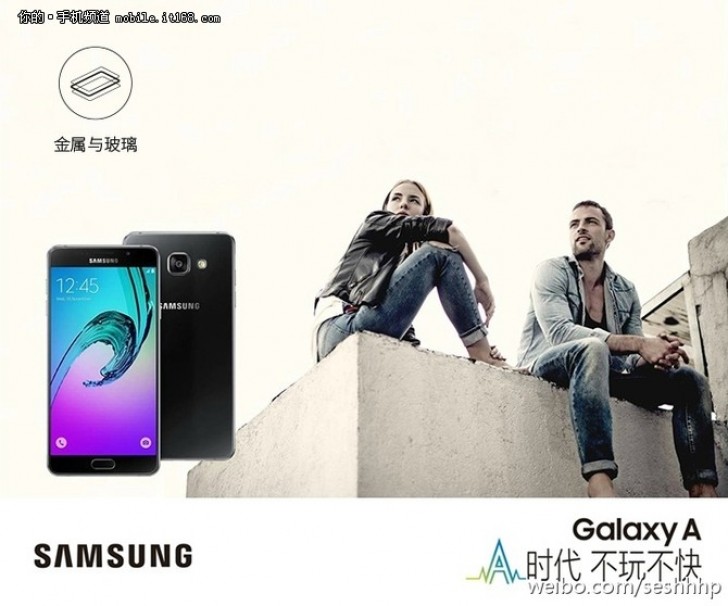

Recently, Galaxy Note 6 rumors have been flying around a lot. To add to that mix, the latest rumor suggests that the Note 6 could be featuring a curved 5.8-inch Slim RGB panel with 1440p resolution. However, GSM Helpdesk also adds that the curved display is still just a possibility as Samsung has not yet decided whether to use a curved panel or a flat one. One thing that all rumors are suggesting is the fact that whether it is a curved display or a flat one, the Note 6 WILL feature a 5.8-inch screen.
If reports are to be believed then Samsung will only release a single Note device this year, which means that Edge+ or Note Edge models are no longer a part of Samsung's plans for 2016. That single device will supposedly be powered by a huge 4000mAh battery. This would most likely make the Note 6 slightly bigger in certain dimensions than the Note 5, but it should not really be a problem as the super-successful S7 and S7 Edge are also larger than the S6 and S6 Edge. The beautiful design of the two smartphones make the increased size irrelevant. Add to it the superb battery life on these two devices, and you will probably have a hard time finding a single person who is complaining about the slight increase in bulk.
Other features "leaked" in this rumor include the same 12-megapixel camera as the S7 and S7 Edge, 6GB of RAM and Snapdragon 823/Exynos 8890 SoC. We were already aware of these specs as was reported by us earlier, but how much of this actually makes their way to the actual version of the Samsung Galaxy Note 6 is something that we will have to wait to find out for sure.
Author: Saikat Kar (Tech-jounalist and enthusiast)
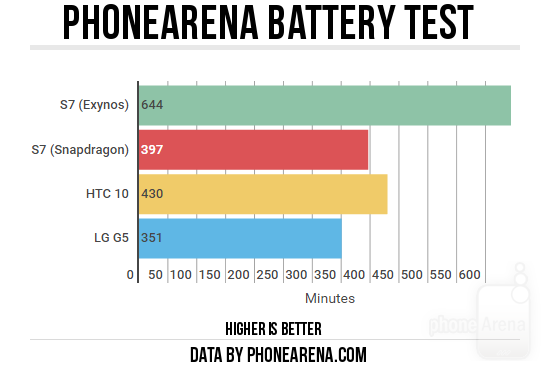
According to the latest test results made public by GameBench, the Exynos 8890 powered Galaxy S7 has exhibited a significantly better battery life, in comparison to the Snapdragon 820 version that is available in the US. In fact the difference is enough to surprise you and not in a pleasant way if you are in the US.
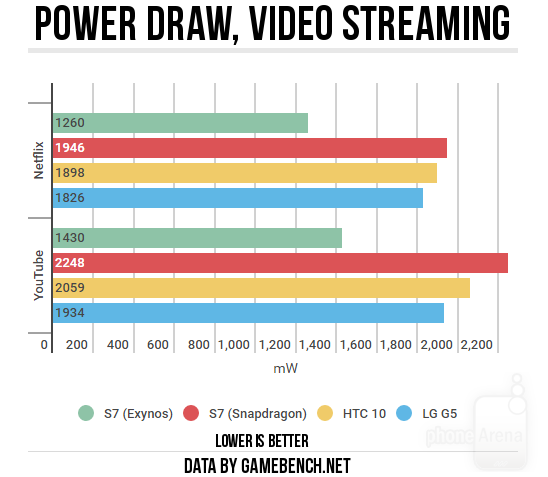
You can see all the data in the images, courtesy of PhoneArena, but the end result speaks for itself. Apparently, the S7 Exynos is 71% more power-efficient, as compared to the S7 Snapdragon version! Sadly, it is even the least power-efficient device when compared to two other SD 820 powered smartphones, the LG G5 and the HTC 10. Even though the Snapdragon variant was almost neck-to-neck in terms of audio playback, the Exynos version did beat it in that department as well.
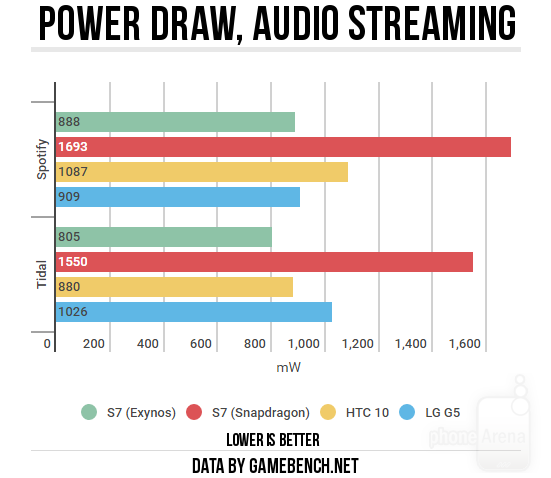
Keep in mind though that the snapdragon variant of the Samsung Galaxy S7 was from Verizon and had the expected bloatware as a result. Nevertheless, the difference in between the two variants is just too great to ignore or blame on the bloatware. We found the disparity to be surprising and disappointing, what do you think?
Author: Saikat Kar (tech-enthusiast)
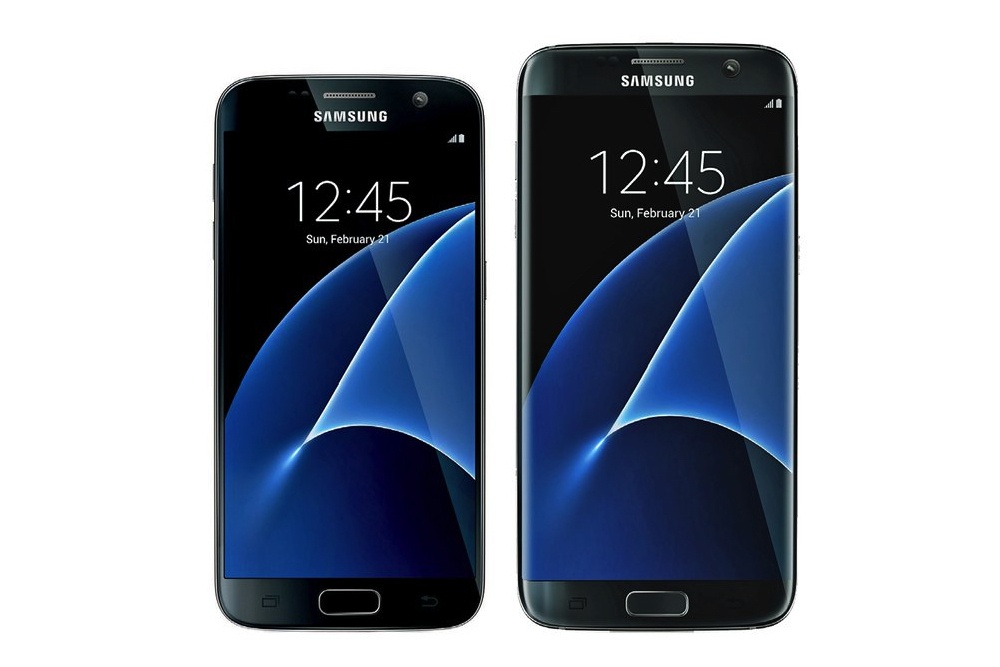
It has become quite a norm with Samsung - just before the release of major smartphones certain information gets leaked. This time around a list of Galaxy S7/S7+/S7 edge accessories have surfaced which gives out pricing info - specifically in the German market. Thanks to German WinFuture, the selection packages few major surprises.
To start off, Samsung is planning to compete with Apple by manufacturing a battery case that would look exactly like Apple's case, which will hopefully look beautiful in terms of design. The case would cost €89.99 ($99.9) which packages a battery with a capacity of 2,700 mAh with support for wireless charging. As per recent speculations, the Galaxy S7 is supposed to come with a 3,000 mAh battery and the S7+ and S7 edge are said to package a gigantic 3,600 mAh battery.
Another interesting thing in the list is the first of its kind Samsung LED View Flip Cover (€69.99, or $77.7). According to the source, the flip-type case will have LEDs which will send out notification in case of incoming calls. Finally, a Leather Cover in black and brown color will also be released during the launch.
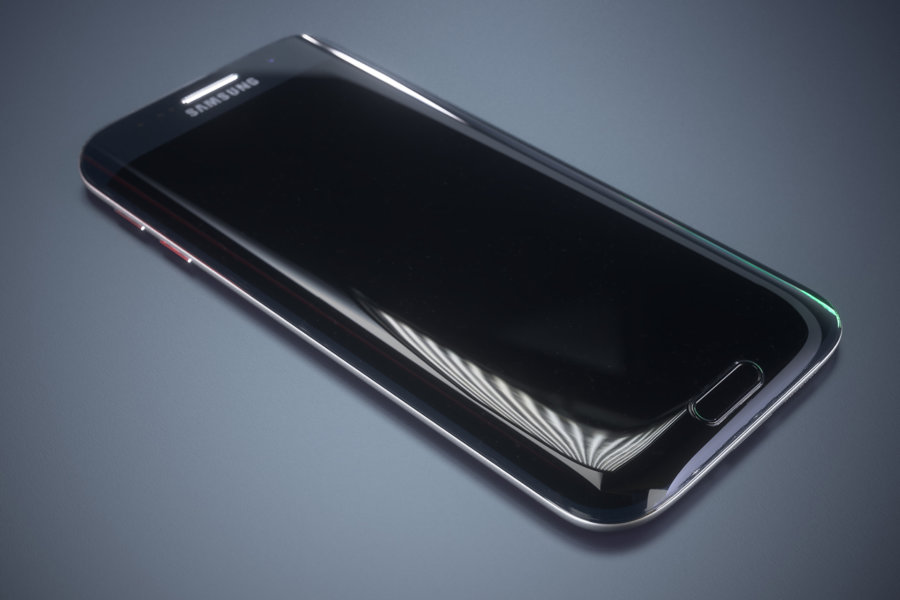
The latest piece of information comes straight from Russia as Eldar Murtazin states that the battery life on the Galaxy S7 will be excellent. According to the Russian blogger, after a single full charge, the S7 will be able to function for two days straight. If this is true then the S7 will definitely see a significant battery upgrade compared to the S6, which was often criticized for poor battery life in an otherwise perfect phone.
This piece of information or "leak" is a follow up from Murtazin's last update regarding his pre-release review of the Galaxy S7 series. Just a few days ago, he declared that the S7 was able to play videos for 17 hours at a stretch with screen brightness set to maximum. On the 3rd of February, he tweeted more about the battery, complete with screenshots of the dual-SIM S7 variant's battery manager. He also mentioned that he was able to get two full days of usage on the his Galaxy S7 with the brightness at 75% and 4G LTE connection activated and used throughout the test.
In spite of being very convincing, we cannot confirm Murtazin's words unless we hear something official or see something more concrete. As far
as we know, the S7 will feature a 3000mAh battery, while the S7 Edge will be powered by 3500mAh of juice. Whether the larger battery is actually able to serve the S7 as well as claimed by the blogger, we will found out in roughly two weeks on February 21 at the Samsung Unpacked 2016.
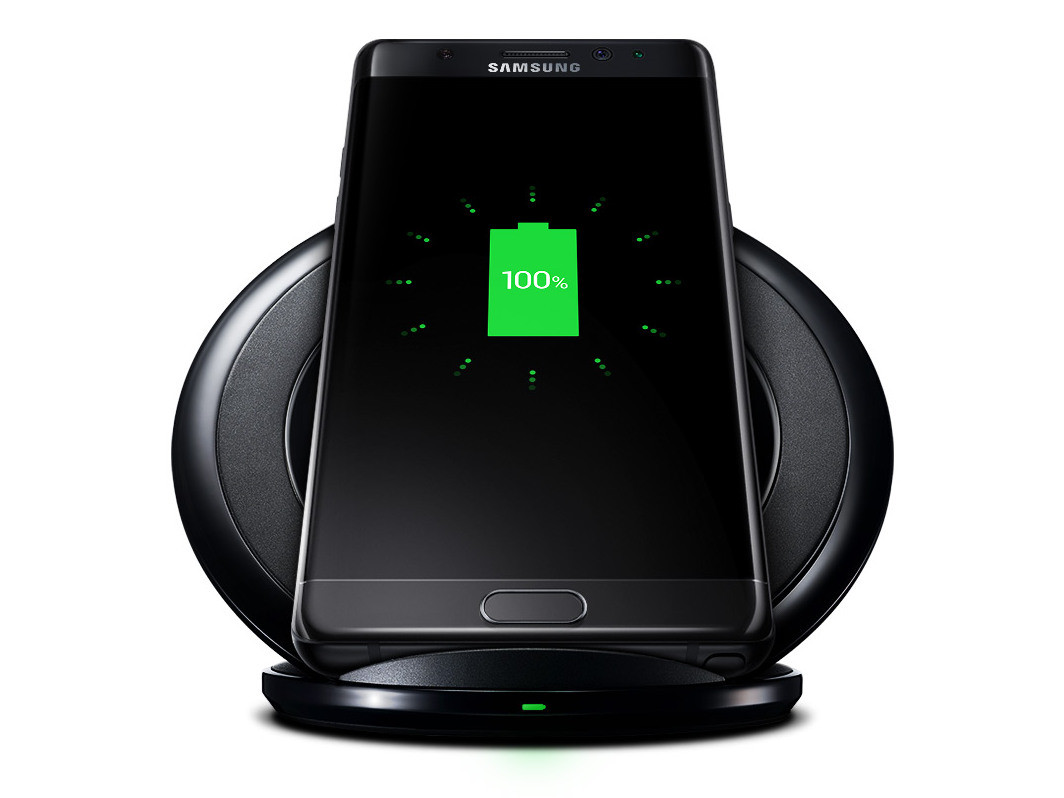
Amidst the biggest mess that the company has ever had to clean up by recalling the 2.5 million Galaxy Note 7 devices shipped all over the world, Samsung is already devising a strategy to let its customers know that their new upcoming batch of Note 7 smartphones will have a safe battery. Samsung will soon start selling the Note 7 once again, as soon as replacements for the potentially dangerous devices are ready of course. The safe new smartphones will sport a green colored battery icon in the UI, while the older phones will continue to sport the white battery icon that has been the norm for Samsung until this incident.
This news report by Cho Mu-Hyun from ZDNet has created a bit of confusion as well because many users who have already replaced their Note 7 with a new one are still seeing the old white battery icon. Therefore it is not quite clear at the moment whether the green icon will only be implemented in Korea or if it will be an international icon of safety. We will know more soon as Samsung makes an official statement.
Saikat Kar (tech-enthusiast)
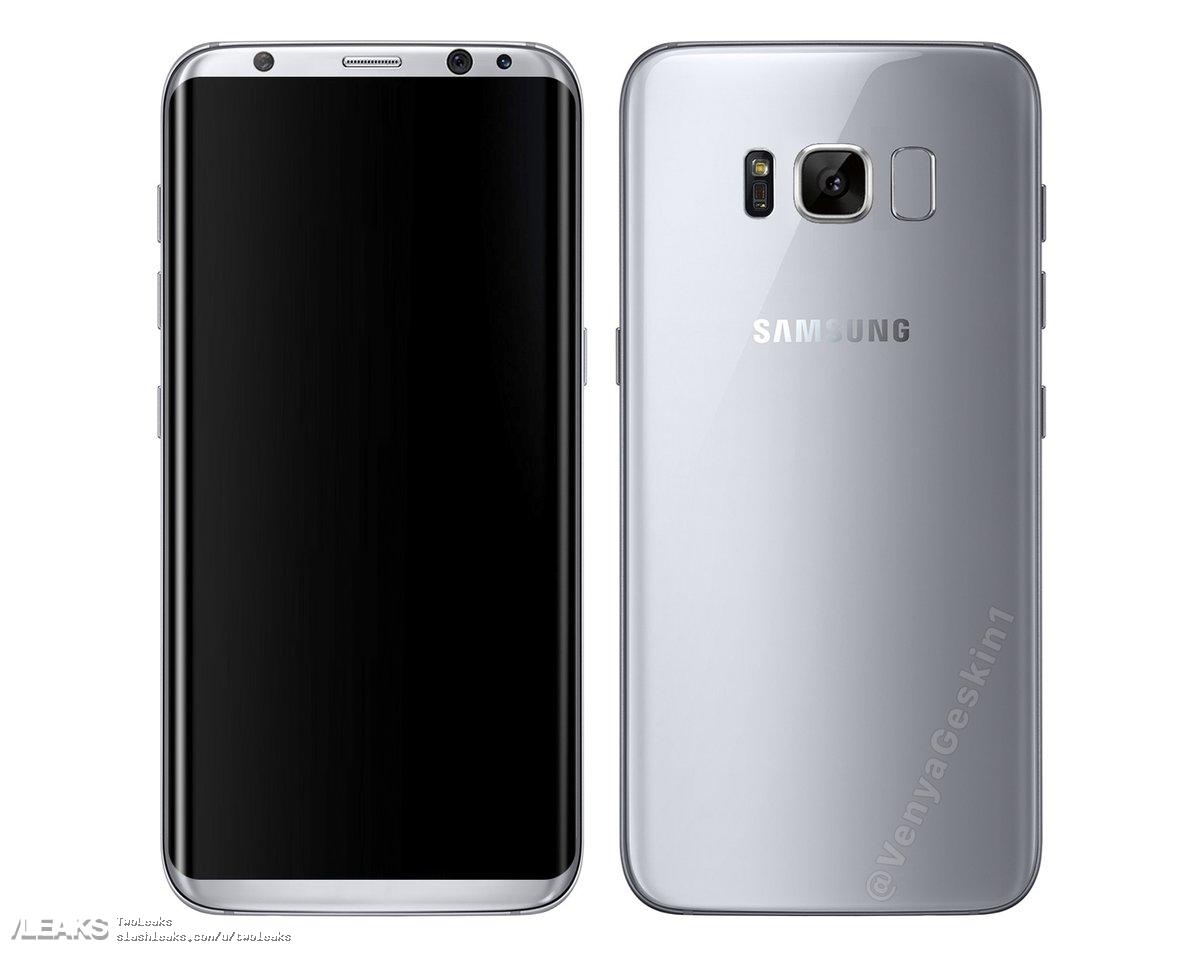
South Korea has supplied a new report to the world regarding the Galaxy S8 and it didn't impress us much. According to this report, the manufacturers which will be supplying Samsung with batteries in 2017, has received orders for a 3,250mAh cell, along with a bigger 3,750mAh cell. As you can probably guess, it is very likely that the batteries are meant for the upcoming Galaxy S8 and Galaxy S8 Plus. If it is indeed true, do you think it's enough juice for the large QHD Super AMOLED displays with VR in mind?
While the batteries are more powerful than the ones currently powering the S7 (3,000mAh) and S7 Edge (3,600mAh), the boost is nothing significant. The S8 series will still sport QHD panels and will probably consume more power due to a larger size (expected). Add VR to the mix, which rapidly drains any battery and suddenly, one has to wonder if the batteries are too small for the upcoming flagships. Of course, the Qualcomm Snapdragon 835 chipset will consume significantly less power due to Samsung's revolutionary 10nm architecture. However, one still cannot help but wonder if it would have been better if Samsung opted for larger batteries by sacrificing a few millimetres.
Saikat Kar (tech-enthusiast)
A recent report by Korea Economic Daily states that The Murata Manufacturing Company will be supplying Samsung with a percentage of the batteries which the OEM will need to power the upcoming Galaxy S8. The Japanese company came into limelight in 2016, when it gained control over Sony's battery manufacturing unit. If this report is true, it puts to rest the rumor that LG will be supplying the Galaxy S8 with a percentage of its batteries.
However, the amount of batteries which will (reportedly) be supplied by Murata is not really significant (2% - 8%). Samsung's own battery division (Samsung SDI) will be supplying the S8 with most of its battery packs. Incidentally, Samsung SDI was also responsible for making the first batch of faulty batteries which caused the Galaxy Note 7 to explode in the first place. The production process has since been revamped and improved upon significantly with an investment of $128 million, according to Samsung. Let's just hope that it was enough to prevent any future disasters.
Saikat Kar (tech-enthusiast)
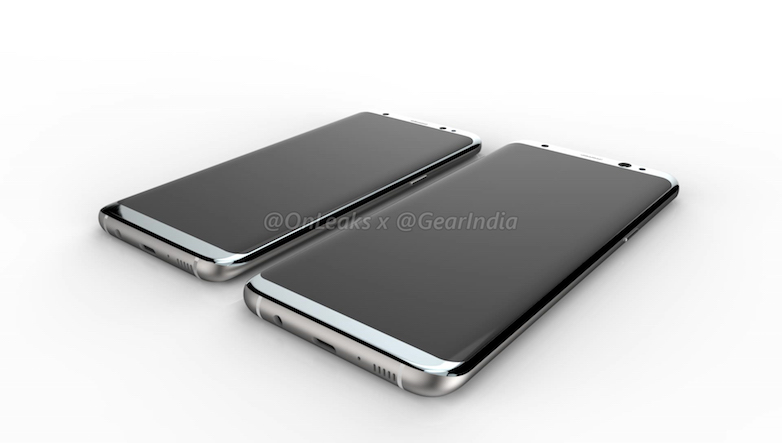
Although most of us were expecting the S8 series to get an upgrade in terms of battery size, it's not happening, according to a report from South Korea, brought forward by The Android Soul. The battery capacity of the regular S8 will remain at 3,000mAh, which is the same as the Lithium ion cell currently powering the Galaxy S7. More surprisingly, the S8 Plus will feature an even smaller 3,500mAh battery than the S7 Edge's 3,600mAh cell. It should be noted that this puts the battery capacity of the S8 Plus at exactly the same size as the ill-fated Galaxy Note 7. The batteries will be manufactured and supplied mainly by Samsung SDI with supplemental supplies from Murata.
It is being guessed that Samsung probably opted out of choosing a bigger battery in order to ensure safety. If this news is indeed true and you are worried about battery life on the S8 smartphones, it might help to know that the Qualcomm Snapdragon 835 chip which will be powering the handset is going to be the most power-efficient one yet. Nevertheless, we admit that it is a bit disappointing to know that the batteries are not getting an upgrade.
Saikat Kar (tech-enthusiast)

To put it as plainly as possible, it seems like the Note 7 incident has hindered the S8 this year in more ways than anyone would have liked. As was made evident by research, the Note 7 was catching fire because of a faulty battery. The problem arose from the fact that the housing of the battery was too cramped. As it turns out, Samsung is putting a battery inside the Galaxy S8 which is disappointingly smaller than our earlier expectations. We think the two facts have a very simple connection!
The leak by SlashGear shows us the batteries which will allegedly power the S8 and the S8+. The 3,000 mAh and 3,500mAh batteries shown here confirms what the leaks had been saying for a while now. In case you didn't figure it out yet, the 3,000mAh battery will be powering the S8 and the 3,500mAh battery will be powering the S8+. Additionally, it reveals that the batteries are being assembled in Vietnam by Samsung SDI, although the cell itself is made in South Korea. What do you think? Will a 3,000 mAh and 3,500 mAh battery be enough for the S8 series, given that they will be running the extremely power-efficient Snapdragon 835 and Exynos 8895?
Saikat Kar (tech-enthusiast)
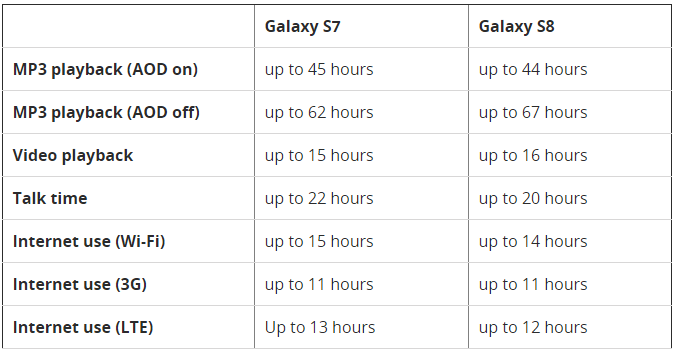
There is just no other way to put it, the Galaxy S8 is an absolute disappointment when it comes to battery life. While everyone was expecting the S8 and S8+ to have bigger and better batteries, as it turns out, Samsung has put in similar sized batteries from last year's S7 and S7 Edge into the S7 and S8+. While the S7 Edge's 3,500mAh battery did not disappoint us, the S7's 3,000mAh battery did. Considering the fact that the S8 has to power the much bigger display and a few additional pixels with the same battery capacity, it was a recipe for disappointment to begin with.
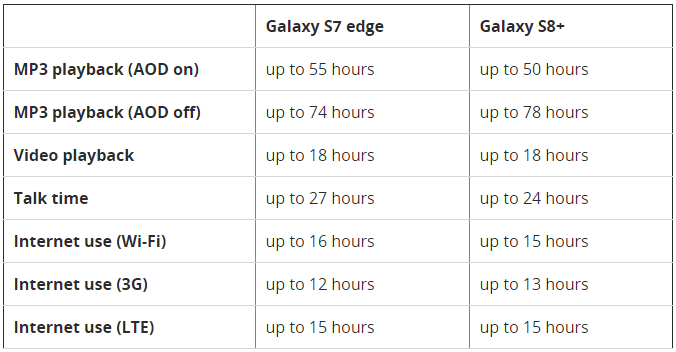
If you were hoping that the new 10nm chips (SD 835 and Exynos 8895) will make the S8 last longer, you are about to be seriously disappointed. According to the stats published by SamMobile, the Galaxy S8 will have an even worse battery life than that of the Galaxy S7. Check out the comparison yourself to see what we are talking about here. If these stats disappointed you and are making you reconsider your decision to buy the regular S8, we wouldn't blame you. The only good news is that if you are willing to buy the much bigger Galaxy S8+, you will probably not be disappointed as it managed to provide battery performance similar to what we saw last year from the Galaxy S7 Edge.
Saikat Kar (tech-enthusiast)
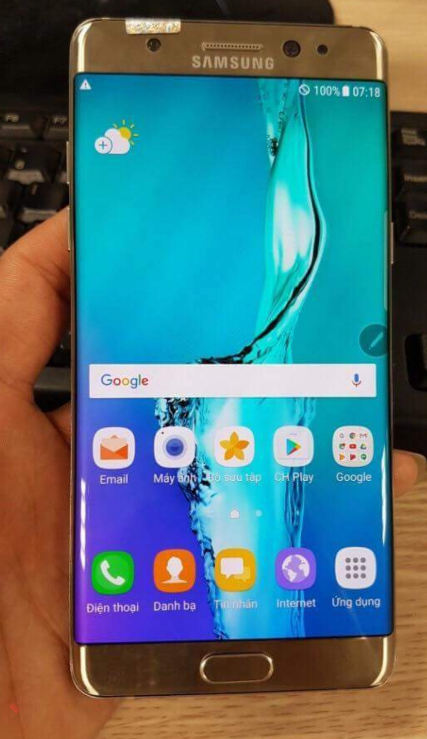
If you are eager to see the Galaxy Note 7 being re-launched then we have good news for you. New images of the Galaxy Note 7 "refurbished edition" has been leaked online. However, the sad news is that in order to make it a safer and less explosive device, Samsung has not only changed the battery line-up, but the batteries themselves as well. While that should be good news, it really isn't because the refurbished Note 7 will now reportedly, sport a smaller 3,200mAh cell instead of the original's 3,500mAh cell.
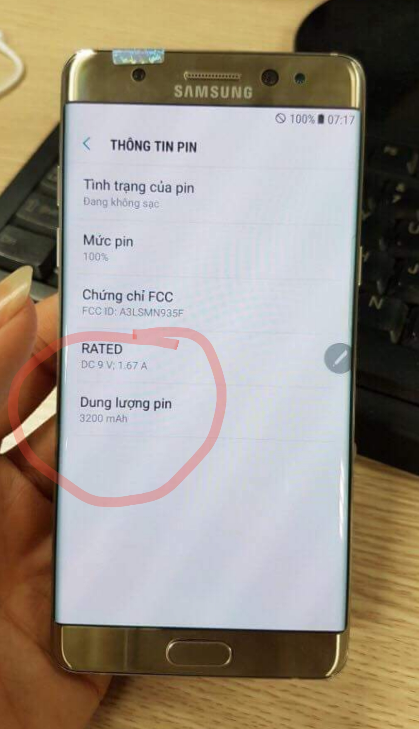
As the pictures came in from a Vietnamese fan site, it seems that the rumors about the Note 7 being introduced in the country may not be just a rumor after all. Rumor also had it that India would also be getting the refurbished Note 7, but a Samsung employee has mentioned that it won't. Even if it is re-introduced in certain nations, it may not actually go on sale, but could only be available as a rental phone. We will have to wait to find out more. In the meanwhile, check out the images to see all that they reveal.
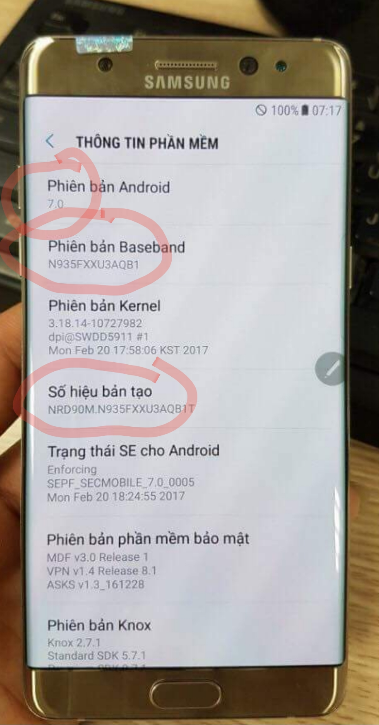
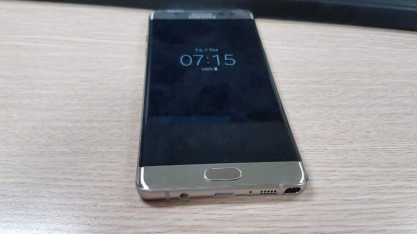
Saikat Kar (tech-enthusiast)
Via: SamMobile
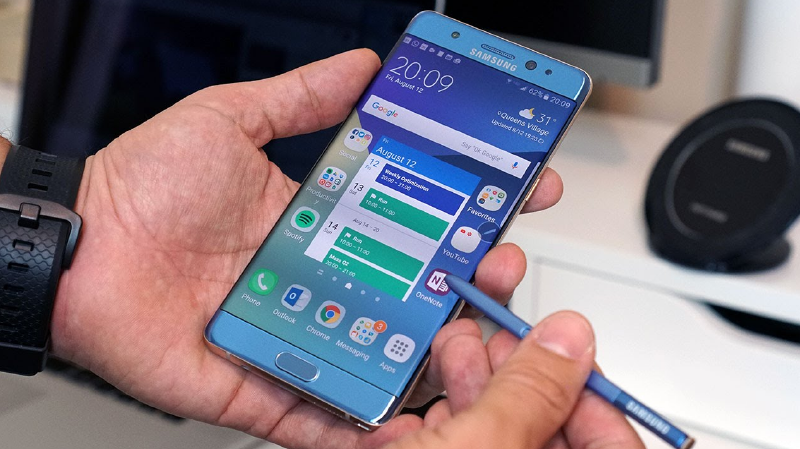
It's true and it's about to happen in June. The infamous Galaxy Note 7 which had caused Samsung to lose billions of dollars, as well as suffer a lot of criticism, bad reputation and take jabs from even the contemporary US President Obama himself , is finally coming back to its home country with a smaller 3,200mAh battery and a roughly 300,00 Won ($266) price cut. The refurbished Galaxy Note 7 will now be available for purchase in South Korea, starting from June.
No new units have been made according to the reports and there will be only about 300,000 of these refurbished smartphones available with a slashed price tag of 700,000 won (or $620). Samsung won't be rebranding it as anything else, so it will go on sale with as the Galaxy Note 7 (SM-N935), just like it should. In spite of all the negativity, it should be noted that the Note 7 was a huge hit for the company and before everything went haywire, critics all around the globe praised it as the best smartphone by Samsung yet. Would you buy one at this price point if it was available near you?
Via: SamMobile
Saikat Kar (tech-enthusiast)
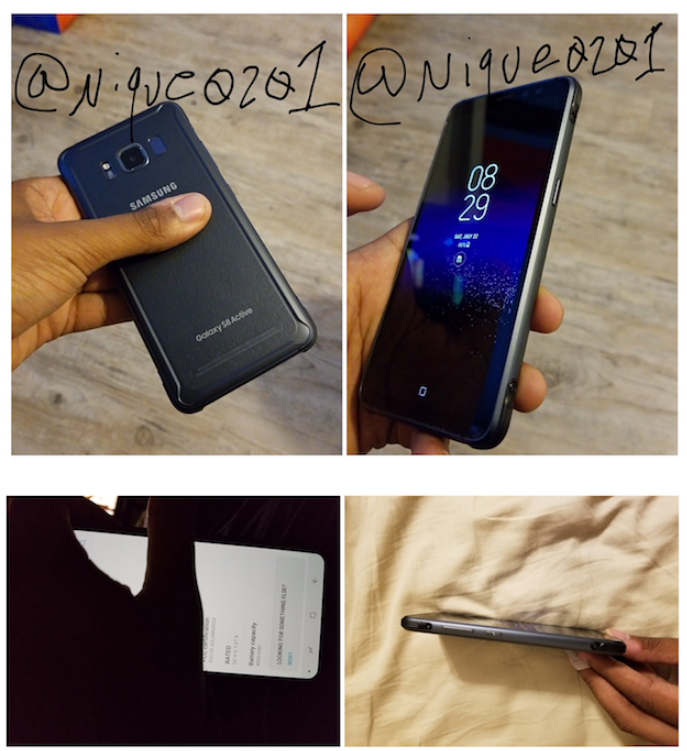
While the Galaxy S8 and S8 Plus are fantastic devices, there are a few things about the two smartphones that are not exactly perfect and the underpowered 3,000mAh battery on the regular S8 is one of those things. The S8 Plus on the other hand has a decent enough 3,500mAh battery, but it isn't anything to write home about either. However, the Galaxy S8 Active will change all that with its 4,000mAh battery when it comes out. It's a shame that it will be exclusive to the United States and that too on AT&T only.
Check out the images in this article which comes to you thanks to a Samsung employee in possession of a Galaxy S8 Active prototype in San Francisco. The phone is going to be made mostly out of polycarbonate with metal on the sides for extra protection. There will not be an Active button on the S8 Active, unlike all its predecessors but it will sport the Bixby hardware button just like the regular Galaxy S8s. All other specs are the same, but the model number on this one will be SM-G892A. Are you waiting to pick one up?
Via: SamMobile
Saikat Kar (the-enthusiast)

Multiple reports surfaced on the internet earlier about the Galaxy Note 8 refusing to turn on once the battery reaches 0% and the phone is automatically switched off and now Samsung has decided to accept some responsibility for this and admit that there is indeed an issue with the battery of certain Galaxy Note 8 devices. It is to be kept in mind that a few Galaxy S8+ users are also complaining about a similar problem and there is no reason to believe that they are wrong either. While this issue isn't as dangerous as last year's Note 7 disaster, it puts yet another blemish on Samsung's ability to supply their users with capable batteries. The good news is that so far, most reports suggest that Samsung has replaced the faulty devices.
It seems at this point that issues are mostly limited to the Qualcomm Snapdragon variants only, although that's not a fact which has been set in stone. Even though they let out a statement earlier which vaguely delivers the message that they might be considering taking responsibility for the bricked phones, clarifications regarding what exactly is the problem has not yet been provided by the OEM.
Saikat Kar (tech-enthusiast)
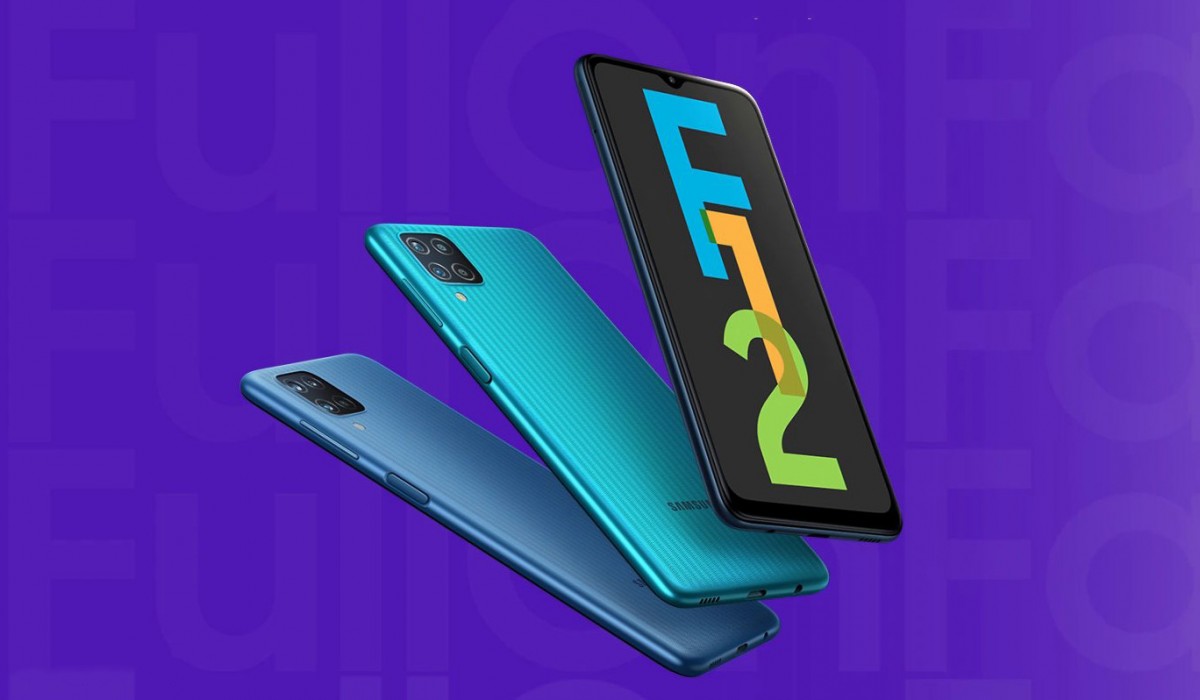
High-end expensive smartphones are pretty much a thing of the past. These days you can easily find an entry-level smartphone with premium-like features with an affordable price tag. The trend of budget-friendly smartphones were introduced due to the competition among Chinese and international smartphone manufacturers. But later on big names like Samsung also joined the trend.
Recently, Samsung has introduced the Galaxy F12, a smartphone with a massive battery size of 6,000mAh and small price of Rs. 10,999 that's about $150. Samsung Galaxy F12 features a 6.5-inch HD+ screen that is good enough for playing video games or watching YouTube videos. The phone comes with eight-core 2GHz Exynos 850 processing chip, 4GB of RAM, and a 64GB of non-expandable storage and 12GB variant for Rs. 11,999. The memory configuration seems reasonable for this price.
The Galaxy F12 comes with a large 6,000mAh battery that comes with a 15W USB-C charger in the box. The device also features a quad-rear camera array that includes a 48Mp ISOCELL GM2 main shooter, a 5MP ultra-wide camera, a 2MP depth sensor, and a 2MP macro camera. The phone features an 8MP front-facing selfie camera sensor.
Galaxy F12 is expected to be launched around April 12. The phone comes with Android 11 operating system with One UI 3.1 ont ht top out of the box. You can shoot 1080p videos at 30fps. The phone is equipped with a loudspeaker, 3.5mm jack, Wi-Fi 802, Bluetooth 5.0, GPS, FM radio, and USB Type-C 2.0. There is also a side-mounted fingerprint scanner to add an extra layer of security.
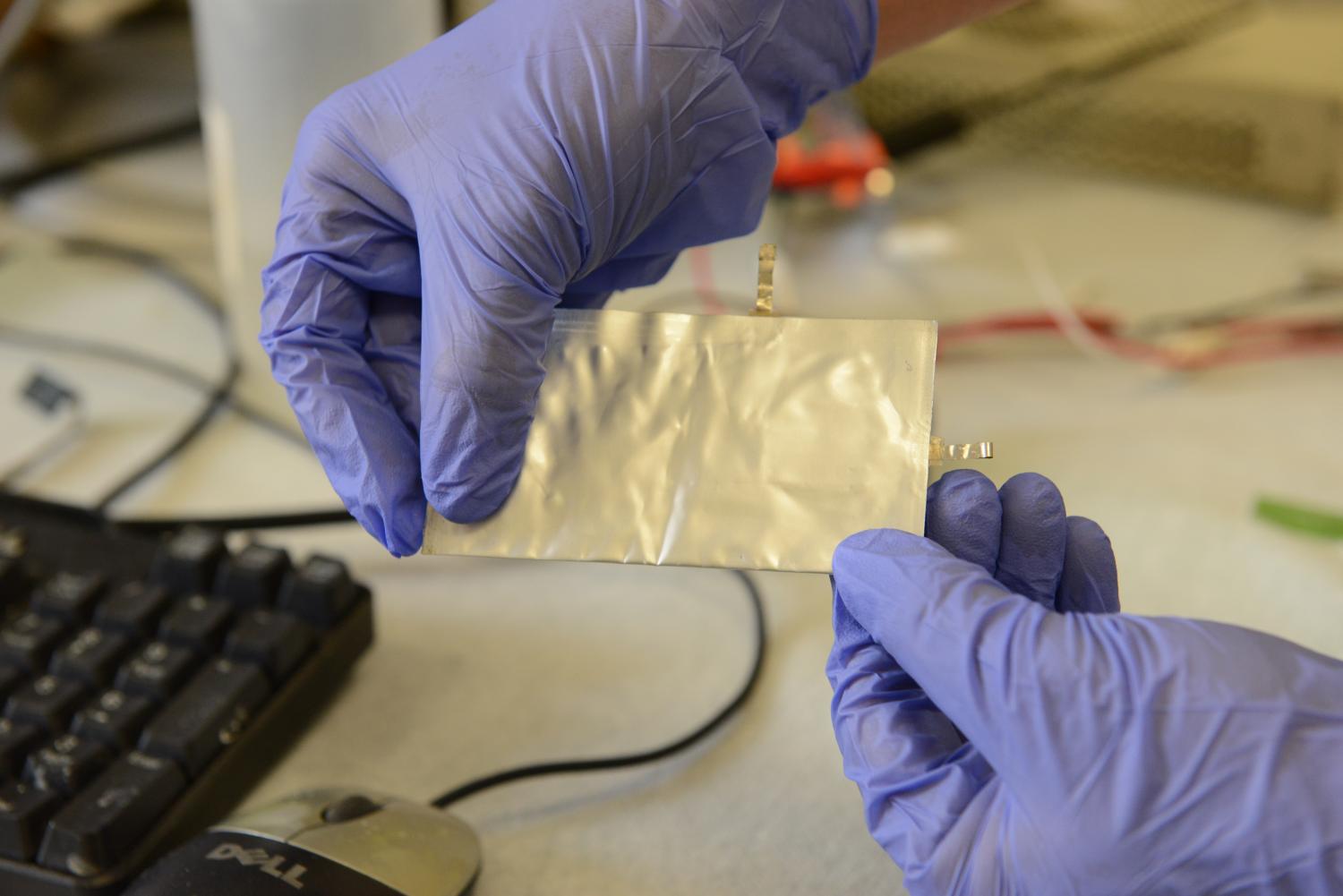
Stanford University scientists made a breakthrough in making a flexible aluminum battery. Today, Google revealed that a small team of scientists working on a next-generation battery technology for consumer electronics.
As part of the Google X research lab, Dr. Ramesh Bhardwaj is working with three other scientists on about 20 different battery-dependent projects. As a former battery expert at Apple, Dr. Bhardwaj and his team is now trying to push the envelope of the lithium-ion battery technology further. He is also testing solid-state batteries for consumer devices.

Google joins a list of tech giants which are trying to improve the battery technology for future, including Apple, Tesla, and IBM among others. We are yet to see whether and how the search giant plans to to utilize this technology.
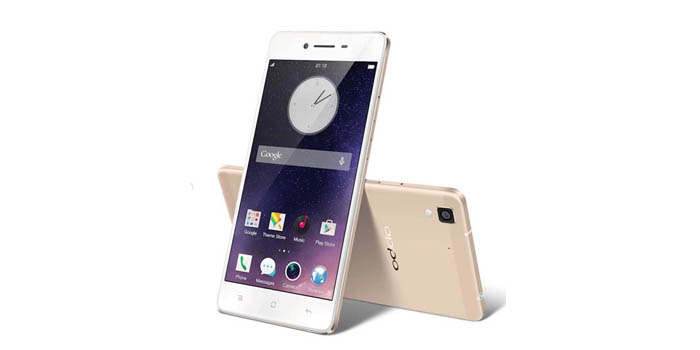
OPPO unveiled the A53 smartphone last week in Indonesia and soon after its release, the company teased the phone's release in other countries including India. The phone has now officially been released in India under a budget-friendly category. The phone costs only Rs. 12,990 and offers some high-end features and specs like 90Hz display, Snapdragon 460 processor, 16-megapixel triple cameras on the rear side. The device comes with a massive battery with fast-charging support.
The OPPO A53 has a 6.5-inch IPS LCD punch-hole display with a 20:9 aspect ratio and 720 x 1600 pixels HD+ resolution. The phone also supports a high display fresh rate up to 90Hz. The phone is using the ColorOS 7.2 user interface based on the latest Android 10 out of the box. It is the first phone to be launched in India with the latest Snapdragon 460 chipset. The phone also has a shared SIM slot to add a microSD card slot. The SoC is coupled with up to 6GB of LPDDR4x RAM and up to 128 GB of storage. The handset comes with features like dual 4G VoLTE, Wi-Fi 802.11ac, Bluetooth 5.0, GPS, USB-C, and 3.5mm audio jack.
The OPPO A53 has a rectangle-shaped camera module at the rear side of the device that houses 3 camera lens, a 16-megapixel being the primary camera lens, a 2-megapixel macro lens, and a 2-megapixel depth sensor. The front side of the phone uses a 16-megapixel camera with f/2.0 aperture. The phone is available in two options in India, such as 4GB RAM with 64GB internal storage, and 6GB RAM with 128GB internal storage. These models are priced at Rs. 12,990 and Rs. 15,490 respectively. You can purchase the phone from Flipkart after its available online. The device comes in two color variants - electric black and fancy blue.
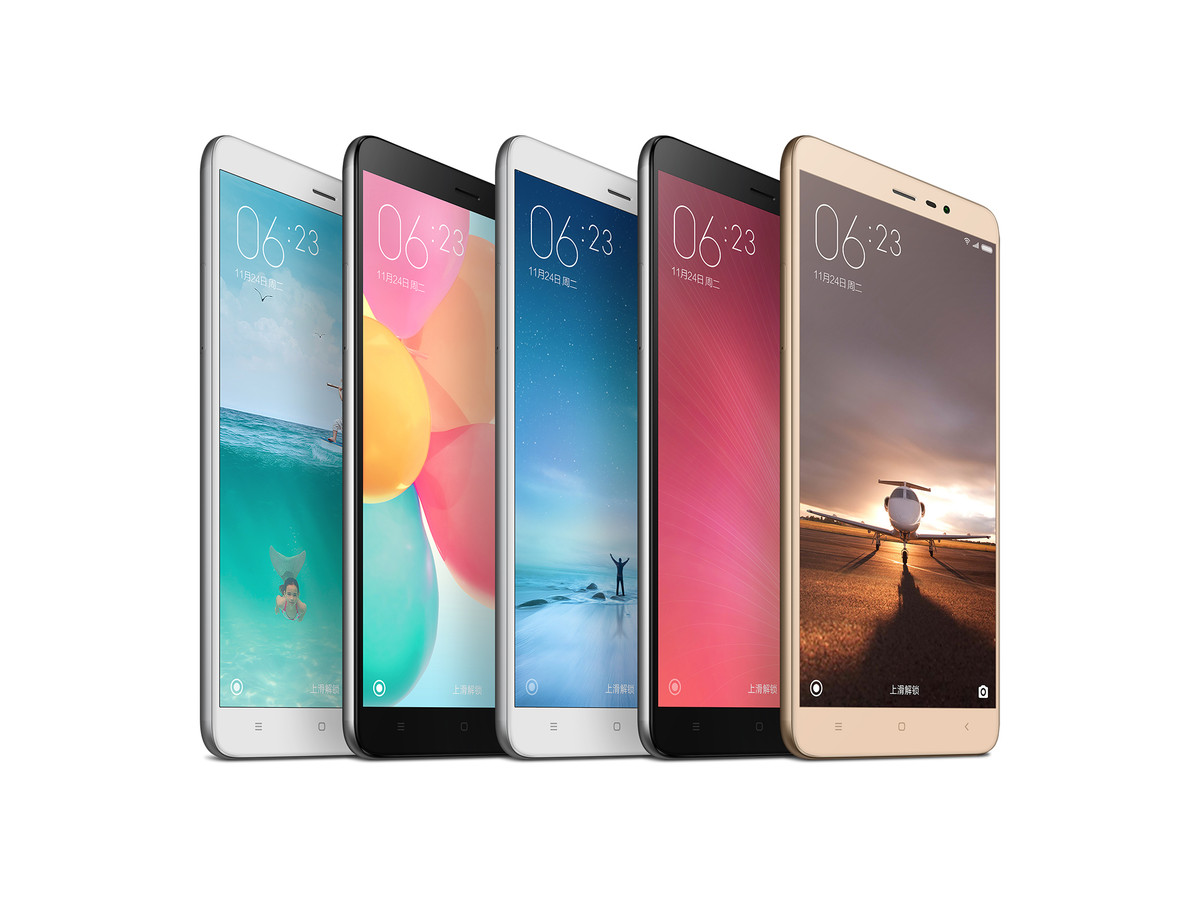
Xiaomi has come up with the new Redmi Note 3 in China. The new device gets bigger and better in comparison to its predecessor, with a new full metal body, fingerprint sensor, a huge 4000mAh battery, and more.
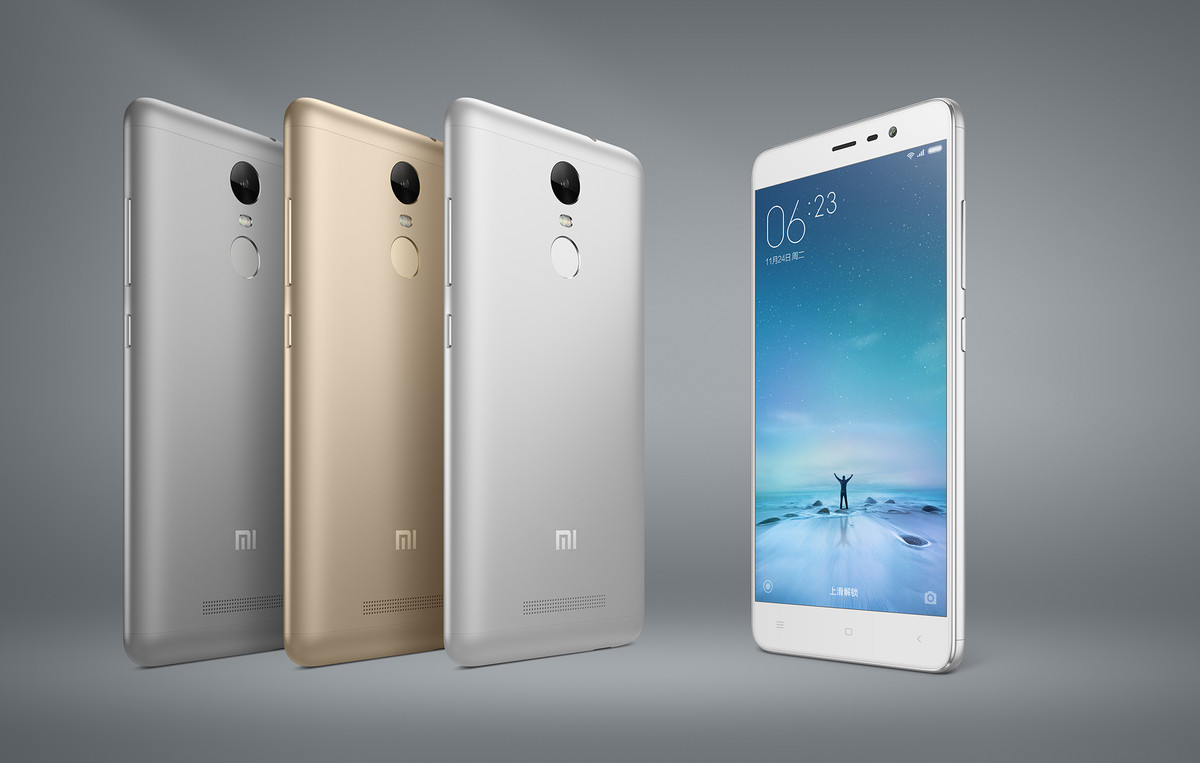
The new Redmi Note 3 sports a full aluminum unibody design with 120-point ultra-fine double sided sandblasting and curved edges. At the thickest area the device will be of 8.65mm and the weight will be 164g, 4g more than its predecessor in spite of the larger battery.
On the rear a new fingerprint sensor is available, which Xiaomi claims unlocks the phone in just 0.3 seconds. Soon we'll see whether the sensor will only be used for unlocking the device or within apps as well. It opens up new possibilities like biometric authentication for payments via the Mi Wallet Service.
Other specifications include a 5.5-inch 1080p display, MediaTek Helio X10 processor, 2GB RAM and 16GB storage or 3GB RAM and 32GB storage depending upon the variant, 13 megapixel rear camera with phase detection autofocus, 4G dual SIM, Wi-Fi 802.11ac, and MIUI 7.
The smartphone will cost RMB 899 ($140) for the 16GB model and RMB 1099 ($172) for the 32GB variant. It will be available in three colors: silver, gold, and gray.
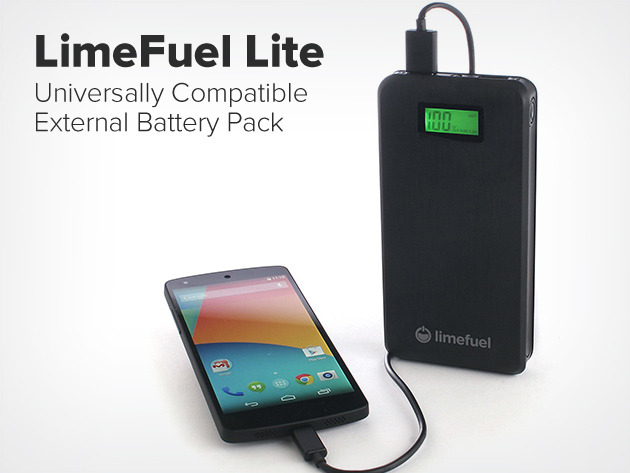
Limefuel Lite is a 15,000 mAh Dual-USB Battery Charger Pack With LCD Screen which will cost you only $34.99. Just think about what you could charge with a 15,000 mAh battery. Flagship Android smartphones pack a 3,000 mAh battery on average, so the Limefuel would provide about 5 charges.
And because this unit has dual-USB ports, with 1A and 2.1A output, you could charge your tablet with it, but also your Bluetooth earphones and speakers, Android Wear watch, MiFi router, and more.
The Limefuel Lite also packs a handy LED flash for those power outages or dark nights, and an LCD screen to show you exactly how much battery you have left and which ports you are using. It measures 5.8 × 2.8 × 0.9 inches and weighs only 12 ounces, making it close to the size of 3 Galaxy S5s stacked on top of each other-not bad!
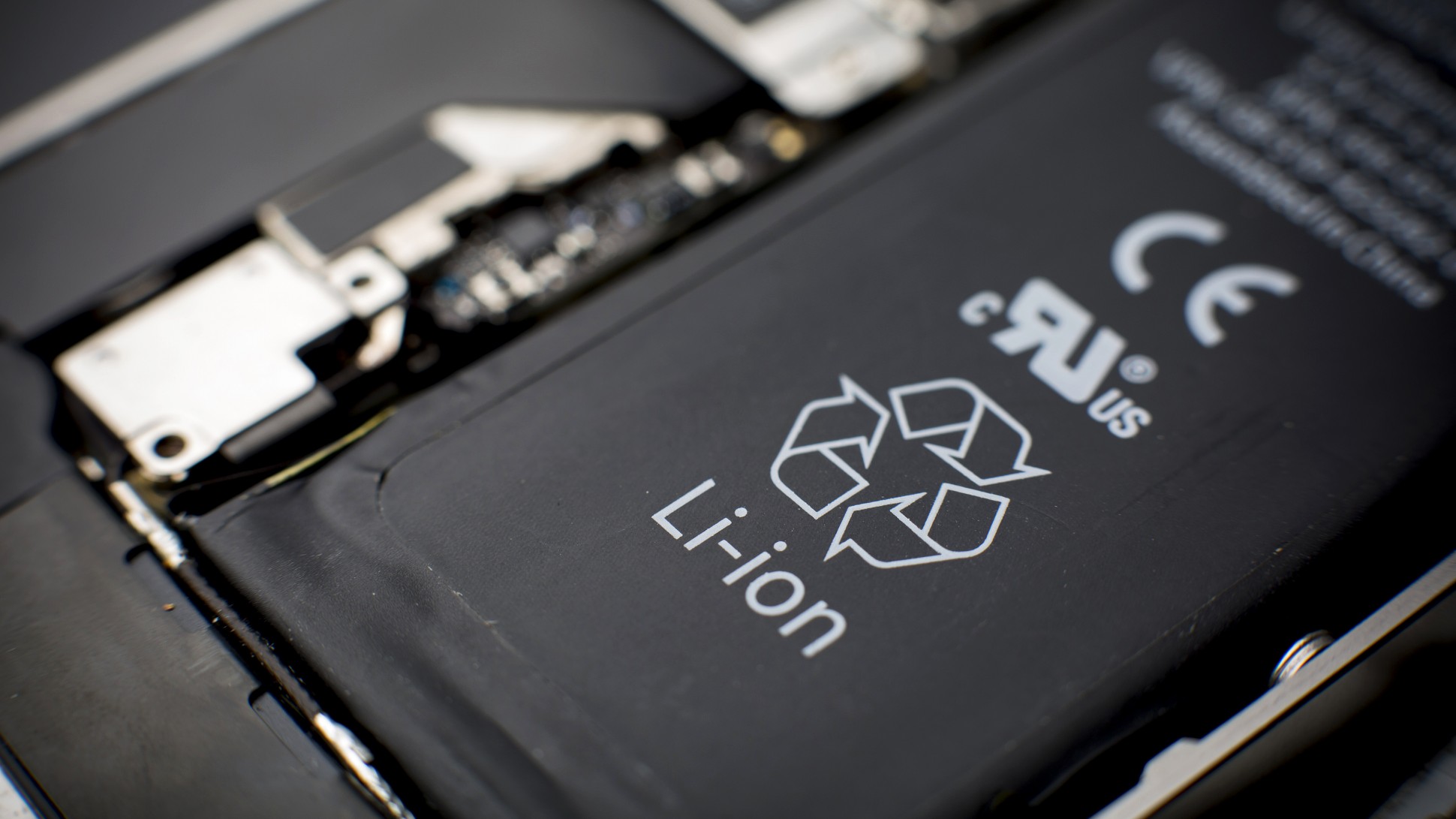
The most important part of any new Smartphone or tablet is the battery, that powers everything in that device. Batteries capacities (mAh) has increased slightly over the last decade but not as expected. As we can't make batteries any bigger, increases in raw capacity are needed, and researchers have been looking to new materials to find the solution.
This is where Samsung's research comes in. The company has come up with a new coating method for battery cathodes, which overcomes the cycling performance and capacity limitations imposed by current implementations. The new process makes use of that excellent conductive material known as Graphene, which is grown directly onto the silicon coating surface without silicon carbide formation.

Samsung's researchers claim that its technique allows the full cell to reach volumetric energy densities of 972 and 700 Wh l-1 at first and 200th cycle respectively, when paired with a commercial lithium cobalt oxide cathode. This is around 1.8 and 1.5 times greater than commercialized lithium ion batteries, meaning more battery capacity for a given area. Typically, these type of designs reduce the battery's life span due to more charge and discharge cycles, but this time the researchers also claim good cycling performance, due to its multi-layer design.
Samsung expects that its breakthrough will have important implications for both mobile devices and the electric car industry, which both really need additional battery capacity. However, like most new ideas, industry observers expect that the technology is at least two or three years away from commercialization.
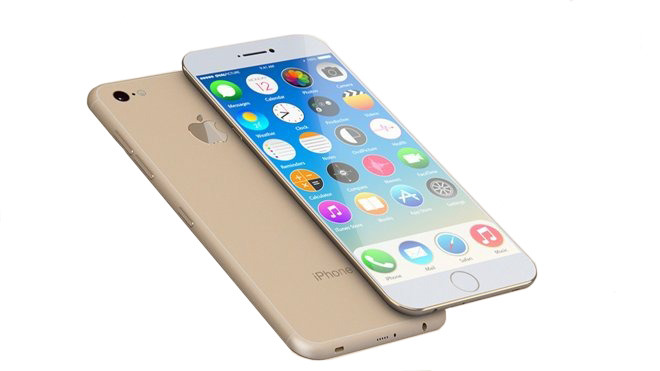
Courtesy of @OnLeaks via Twitter, we now have a new rumor about the iPhone 7 and it seems to be a reliable one. It was stated that the iPhone 7 will most likely be powered by a 1,960mAh battery, which is about 14% more powerful than the current gen iPhone 6s's battery (1,715mAh). There is a slight catch though; OnLeaks also mentioned that this is "not 100% but almost..." We would certainly like to see the "almost" part turn out to be true as the iPhone could definitely use the battery boost.
Although this is purely based on assumption, this leads us to believe that if there is an iPhone 7 Plus this year, then it will sport an even bigger battery than the iPhone 6s Plus' 2,750mAh cell. If we said that it too would sport a 14% increase over the iPhone 6s Plus' battery, we would be stretching our imaginations too far though! However, a bigger battery should definitely be on the cards. We will surely find out more as rumors and leaks will continue to surface on the internet before the official release date of the upcoming iPhones in September, 2016.
Author: Saikat Kar (tech-enthusiast)
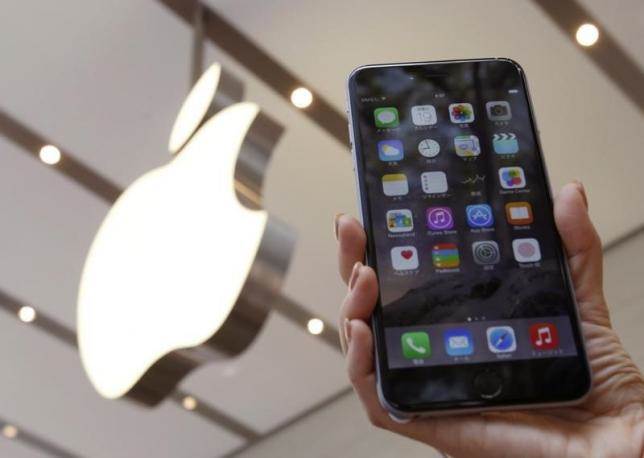
According to the China Consumers Association, many of the iPhone models are experiencing a strange issue where the phones are switching off unexpectedly. They are claiming that the affected models so far include the iPhone 6, iPhone 6 Plus, iPhone 6s and the iPhone 6s Plus. In fact, this isn't even a localised incident as consumers all over the world have reported similar problems with their iPhones in the last few weeks. Apple had in fact, issued a notice globally on November 20, while addressing the problem.
"Apple has determined that a very small number of iPhone 6s devices may unexpectedly shut down. This is not a safety issue and only affects devices within a limited serial number range that were manufactured between September and October 2015.
If you have experienced this issue, please use the serial number checker below to see if your iPhone 6s is eligible for a battery replacement, free of charge."
However, the Chinese authorities have declared that the battery problem extends beyond just the iPhone 6s and Apple has failed to "meet basic consumer needs for normal wireless communication." Some of the Chinese users are even reporting that changing the battery as instructed by Apple in their notice, doesn't solve the unexpected shutdown problem either.
It is evident that the problem is serious enough for the authorities to take notice of the matter, but Apple has not yet replied to these reports or notices till date.
Saikat Kar (tech-enthusiast)

The Moto G8 Plus is the best possible experience at a budget price in the G-series. The G-series phones are considered the best inexpensive phones of the years now. The Moto G8 Plus has more premium features such as a versatile camera, stereo speakers, minimal bezel, and better battery management than its predecessor Moto G7 plus. Due to the rising competition in the same category, we have seen some premium features coming to budget phones. The latest phone brings in a 48MP triple camera system with fast charging as the main selling USB. But is it enough?
The Moto G8 is priced at $310. It has a plastic body and available in two colors - cosmic blue and crystal pink. The back panel has a gradient-like glossy finish, and the logo aligned in the middle. There is a volume button and unlock button at the right side, which the left side has a hybrid SIM card slot. On the top edge, there is a microphone and a 3.5mm headphone jack. The G8 plus is water repellent, but it is not the same as IP67 rated phone, so keeping it away from the water is always a good strategy.
Overall, there is nothing extraordinary about the design. The Moto G8 Plus has a slightly bigger screen than the G7 Plus at 6.3-inches. It is an IPS LCD panel with a Full HD+ (2280 x 1080 pixels) resolution and a U-shaped notch up top. The screen has 19:9 aspect ratio, which is decent for watching videos, as they're often in that ratio. The screen is topped with a layer of Panda Glass which is similar to the popular Corning glass solution for protection against drops. Moto G8 Plus is powered by a 4,000mAh battery, which is a pretty decent capacity even at the low-price tier of phones. You can last for a one day on a single charge with normal usage that includes being active on social media. The phone supports 15W fast charging and can fully charge in 150 minutes.
If you are looking for cool watches, please visit The Watch Company.
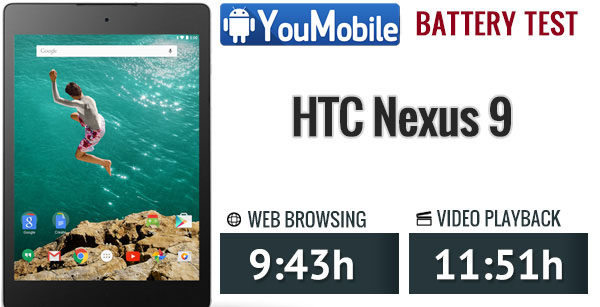
The latest Google tablet, HTC Nexus 9 has just hit the markets, many users are still waiting for reviews results on the tablet battery life and audio quality. We got the first battery life test from gsm arena for the Nexus 9. The results are good, it scored 9:43 Hours Web browsing and 12 Hours video playback.
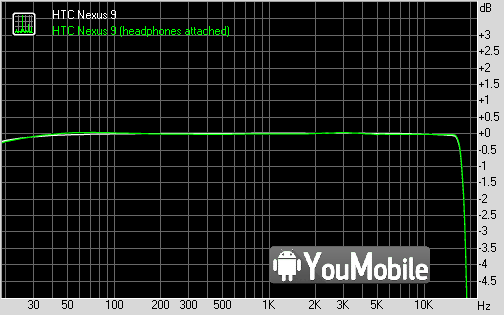
HTC devices is known for its Amazing Sound Quality and the Nexus 9 is no difference. The devices packs all the sound goodies from HTC, from Boomsound front Dual-speakers to the build-in audio amplifier.
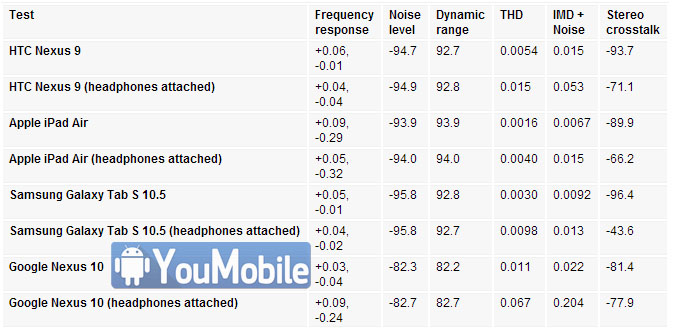
The Audio test shows great stereo crosstalk even with the headphone plugged-in [-93.7, -71.1]. The Audio Noise is very low [0.0054] and the speakers is the highest among tablets.
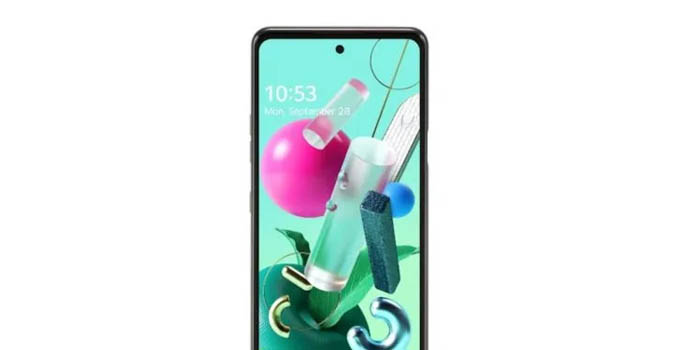
The LG Q92 is the next 5G smartphone from the company this year. As per leaks, the phone is expected to be an affordable variant of the LG Velvet 5G. Although we don't know the release date yet, we are getting more leaks ahead of its launch. Recently, a user at Twitter uploaded a specification sheet of the LG Q92 that lists most of the information on hardware and design features leaving not much for our imagination.
According to the spec sheet, the phone features a flat LCD design with a punch hole in the center of the upper part of the selfie camera. The back of the phone is curved and house four rear cameras with a distinct appearance. There are two large sensors and two smaller ones with the LED flash. The phone has a big 6.7-inch FHD+ punch-hole display that houses a 32MP sensors for selfies and video calls. The phone is powered by Snapdragon 765G processor under the hood and comes with 6GB RAM and 128GB of storage.
The device is available in three colors - ceramic white, mirror titanium, and mirror red. For photography, the company has integrated four cameras at the rear side of the device consisting of a 48MP primary camera, an 8MP ultra-wide-angle camera, a 5MP depth sensor, and a 2MP macro camera. There is a side-mounted fingerprint scanner, support for LG pay, and the 4,000mAh battery for fast charging. The LG Q92 also uses AI to optimize the hardware and software functionality of the device. The LG Q92 has stereo speakers to play music. The spec sheet doesn't reveal anything about the operating system being installed on the device, but it is safe to assume that the phone should run Android 10 out of the box. We are expecting the phone to be launched by the company this month. It would be launched in the home country before making it to the other markets.

Li-ion Batteries are indeed the most crucial hardware components, every Smartphone has one, and it is always NOT enough for the user's needs. Taking a good care of your battery is a very important matter as its capacity wears by time which affects other parts of your device.
In this tutorial here, we will provide you this Technical Smart Tips to improve your Battery's lifetime and improves its performance along a normal day usage.

How to Care for your Smartphone's battery the correct way:
1. Several partial charges are better than a full one
Well, just like in real life, several sprint sessions are better than a marathon. Lithium-ion batteries appreciate partial charging, for example from 30% to 60% or from 45% to 79%, as this keeps the battery's cells close to their ideal state for longer. This means that you have no excuse not to charge your phone several times a day if you can do so.
2. Avoid complete discharges
Okay, extremities are bad for your battery's health. Leaving it at maximum voltage for a long period of time is bad, but draining it all the way down to 0% is even worse. While modern batteries can't fully discharge (whatever you do, there's still a small amount of electricity that will remain unavailable to your phone's hungriness), hitting the rock bottom of your juicer means that some of the battery's cells will no longer be able to hold charge. And this is pretty bad.
3. Your phone's battery feels best at ~40%
There's a reason why the batteries of most phones come pre-charged between 40% and 50% - this is the ideal state of a battery as the voltage is neither too high, nor too low. First of all, this exact charge level does not stress the battery's cells, yet it still allows it to slowly discharge itself while waiting for the impatient user to provide a steady flow of electrical current.
4. Avoid high temperatures
High temperatures are bad for your battery. Your battery can lose up to 80% of its overall capacity if you store it at temperatures of 140F (60C) in a year, though we doubt that anyone will do so. At 77F (or 25C), your phone will lose less than 20% of its maximum capacity for one year.
5. Low temperatures are a no-no as well
If you need to store a battery (due to reasons unknown), make sure that you don't subject it to extremely low temperatures, as freezing deteriorates cells' ability to hold charge, similar to the way heat affects them.
6. Leaving your battery depleted for a long time will render it useless
Normally, your lithium-ion battery will be depleted if the voltage level falls down to roughly 3.0V/cell. If, however, the voltage inside the battery falls below 2.7V/cell, the battery's protective circuits will put into the so-called "sleep" mode, making it nonchargeable naturally, that's the worst case scenario. That's why it's advisable to always make sure that the battery is charged to some extent ideally,that'd be around 40%, as we already mentioned.
7. Lithium-ion batteries have a shelf life
Simply put, you shouldn't stock up on lithium-ion batteries regardless whether you use them or not, they slowly degrade over time and their maximum capacity deteriorate. Instead, buy a new battery immediately before you put it inside your device.
![]()
If you own a Samsung Galaxy device, you probably have Battery life issues ? Right ? Most of the battery life problems is caused by Samsung's super AMOLED displays, as they are huge (5.0" - 6.0") with resolutions various from FHD to QHD which means more pixels to power and more brightness needed. The display consumes an average of 45% to 55% of your battery life. Don't worry we have a solution for you... Easy and Safe too!
To increase your battery life you will need to reduce the number of pixels on your screen by reducing the resolution of your screen. Placing black spots in a pattern over the screen will actually turn off the pixels in those locations (because in AMOLED tech black color is achieved by actually turning off the pixels on the display). So parts of your screen will be turned off. You'll do that using a simple App that does NOT require any Rooting at all.
Increase Battery Life by Following these Instructions:
1. Download Pixel Battery Saver
Download & Install the App from Google Play Store Here [FREE]
![]()
2. Choose level of effect
The app will apply a filter over your screen, placing black pixels in a pattern. You can choose the pattern's density as soon as you launch it.
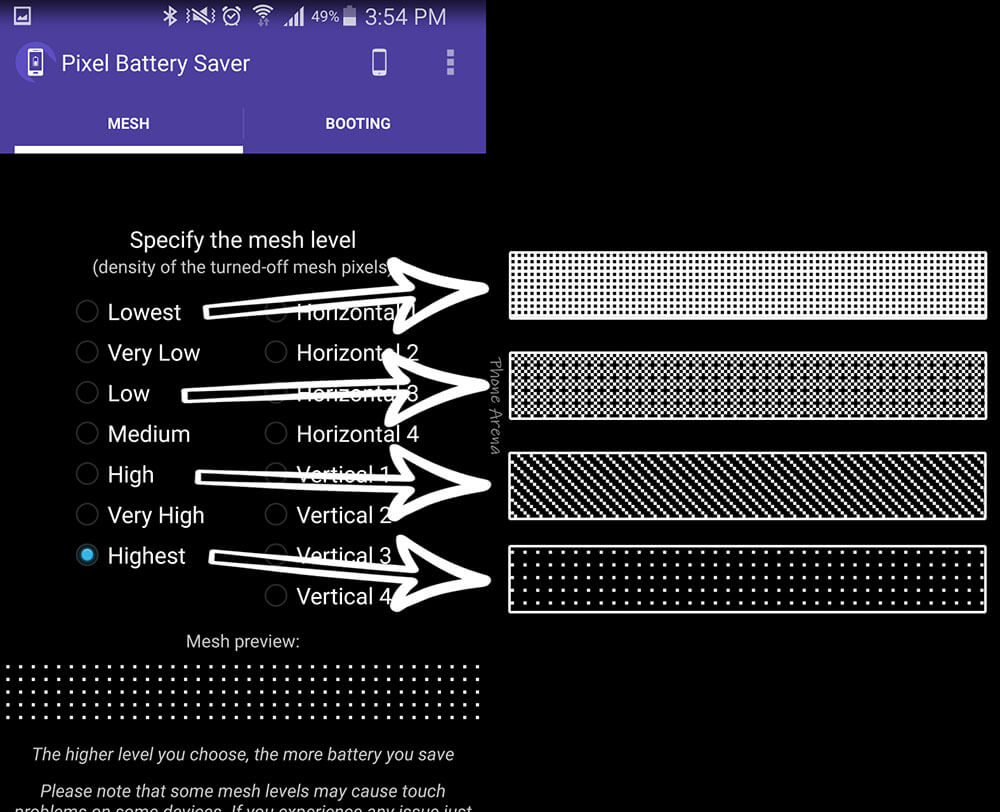
3. Activating the filter
This is what happens when the app is doing its work. Note that the effect looks much less pronounced on the actual phone's screen.
4. Want battery saving only?
If you only wish to reduce your screen's sharpness when the battery is running low, tap on the "Booting" tab on the top right, then check "Start on specific battery level" and "And only then" (if you wish to not be able to turn the filter on manually), then use the slider below to set the battery threshold.
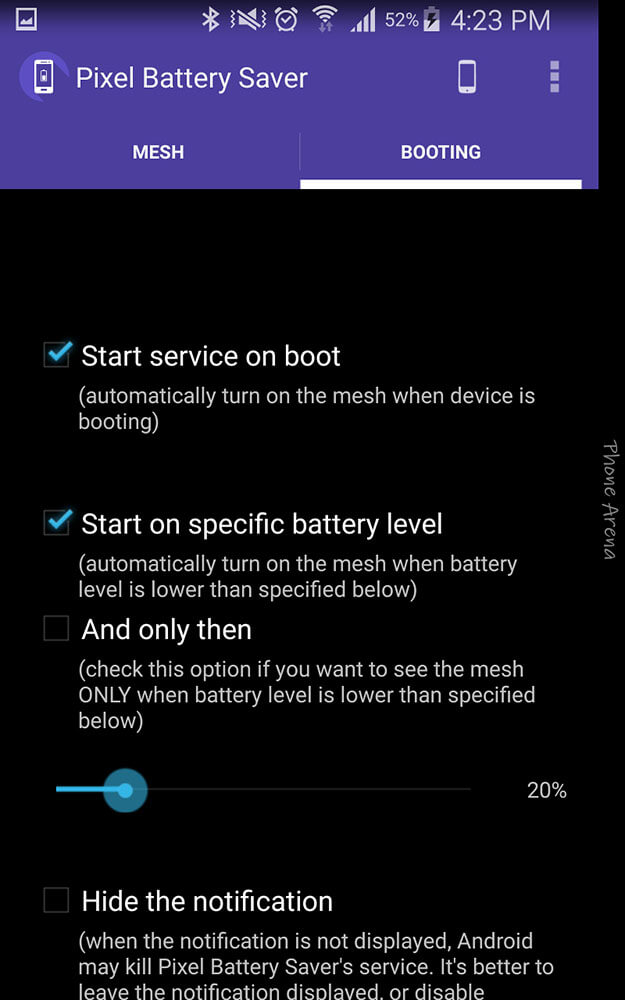
5. Permanent notification and quicktoggle
The app runs in persistent mode, so Android can't close it at random. Its notification will give you a quick on / off toggle, too, so that makes it useful
6. Toggle at will
And there you go - you are free to reduce the screen's sharpness at will and save some precious battery. Now combine this with Power Saving Mode for some extreme longevity!
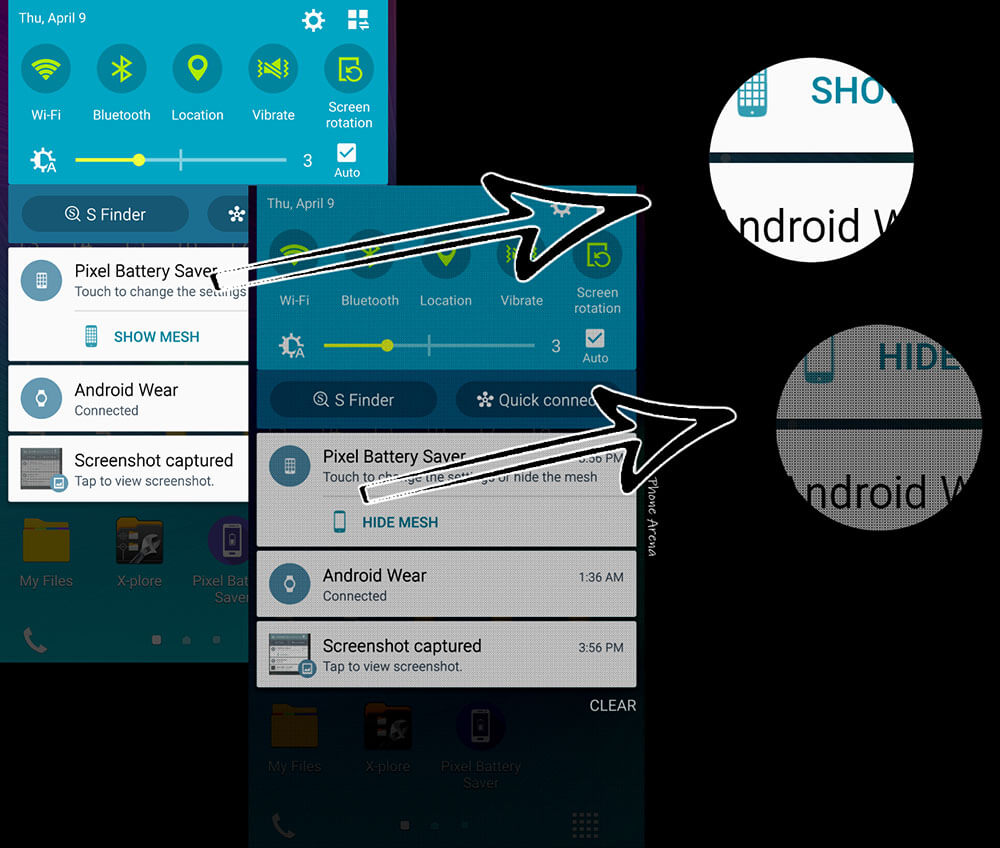

There has been a good amount of leaks about Moto G8 and G8 Plus specs by XDA-Developers. Now other leaks have been posted by 91Mobiles about its design. The renders have been reported of the vanilla Moto G8. The picture shows us how the front and back of the Moto G8 will look. It has a punch-hole cutout on the left side of the display, a vertically stacked triple camera system, and a fingerprint scanner located under the Motorola logo at the back side of the device.
The render also shows some details including a d3.5mm port at the top of the smartphone. There is a prominent chin and what seems to be macro and ultra-wide branding on the back side. These apparent Moto G8 renders look good enough to attract the attention of mobile users. The Moto G8 and G8 Plus share some features and hardware specs, such as both have a punch-hole display, a physical fingerprint scanners just below the rear Moto logo, a Snapdragon 665 processing chip, and Android operating system version 10.
The Mote G8 has a big 6.39-inch HD+ LCD display. It uses 2GB/4GB memory and 32GB/64GB storage. There is dual-SIM support in some regions but no NFC. The phone is also said to offer a 4,000mAh batter with 10W charging, making for a hefty upgrade over the Moto G7's 3,000mAh battery. The vanilla Moto G8 is rumored to have a triple rear camera, featuring a 16MP f/1.7 primary camera lens, 8MP f/2.2 ultra-wide lens, and a 2MP f/2.2 macro lens. An 8MP camera in a punch-hole cutout is said to be available for taking selfies.
The phone is expected to offer a 5,000mAh battery with 18W charging. This would line up with an earlier FCC filing for a Moto phone with a 5,000mAh pack. The power device is said to have an identical camera layout compared to the vanilla G8 and might have a fourth camera lens for the depth or potentially a telephoto camera restricted to higher-end mobile devices. There is no price on the price range for the device yet, but hopefully, it is competitively priced to take on Nokia and Samsung.

Since Motorola has re-surfaced, it is flooding the smartphone industry with mobile phones of almost similar options. Almost a month ago, the company launched the OneFusion plus, and now we have another model in the mid-range phone. The Motorola one function isn't anything special when it comes to the hardware specs. It is a more economical version of its predecessor Motorola One fusion plus.
The major difference between the One Fusion and the earlier One Fusion plus, the latter features a 16-MP front-facing camera that rises to the occasion. The One Fusion's unspecified front camera, in contrast, hides insides a tiny waterdrop notch on the phone's massive 6.5-inch display screen. Despite its size, however, that Max Visions display HD+ resolution.
The Motorola One Fusion is powered by an old Snapdragon 710 with 4GB of RAM. You get 64GB as internal storage but that can be extended if you want to. There is also a traditional fingerprint scanner for security on the rear side, though we don't know anything about the headphone jack yet. The Motorola One Fusion's selling point is its battery and cameras.
The phone features a 5,000mAh battery that is advertised to last up to 48-hours, depending on how you use it. The One Fusion sports a 6.5-inch Max Vision HD+ display with a waterdrop notch, unlike the notch-less One Fusion+ screen. Optics-wise, it boasts a 48MP main camera with Quad Pixel technology. This is joined by an ultra-wide-angle lens with a 118-degree field of view, a Macro Vision camera, and a depth sensor.
There isn't any news on the price yet, but the One Fusion is expected to get a lower price than the 300 euro for the plus variant. The phone is available now in various countries of Latin America and will be launched in Saudi Arabia and the UAE in the next month.
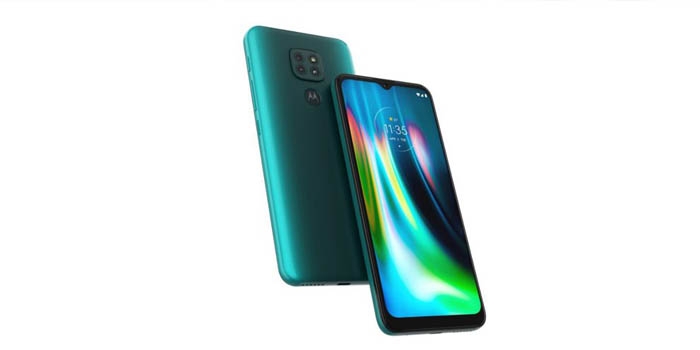
The Moto G9 by Motorola has launched in India officially with the affordable smartphone likely to reach other countries in the near future. Thanks to competition in the mobile industry, we are not short of budget-friendly smartphones but the Moto G9 is yet another addition to the list that includes less than $200 price tag. Moto G9 is the direct descent of the Moto G8 that was launched earlier this year, with the price you might expect from the series. The phone doesn't claim to be heavy-duty and has some modest features.
The Moto G9 comes with a large 6.5-inch HD+ LCD screen with 1600 x 720 resolution and a 20:9 aspect ratio. Inside the Moto G9 comes with Qualcomm Snapdragon 662 chipset, 4GB of RAM, and 64GB of internal storage. The phone comes with an expandable storage option via a microSD card. The phone features a massive 5,000mAh battery that also supports fast charging. With the USB-C fast charger that comes along with the device, you can charge up to 20W charge speed. The device has a notable fingerprint scanner on the rear side, support NFC that is needed for mobile payments, and a water repellent coating. This isn't the same as an IP certification by a stretch but it can save your phone from a few splashes here and there.
The phone comes with three cameras at the back including a 48-megapixel primary camera, a 2-megapixel depth sensor, and a 2-megapixel macro sensor. At the front, the phone features a dewdrop notch that is capable of taking 8-megapixel shots. The Moto G9 is set to go on sale in India starting from August 31, 2020. The phone will be available for around Rs. 11,499 or around $155. It will be available in two colors - sapphire blue and forest green. Given the date, we can expect the phone to be available in other global markets over the coming weeks.
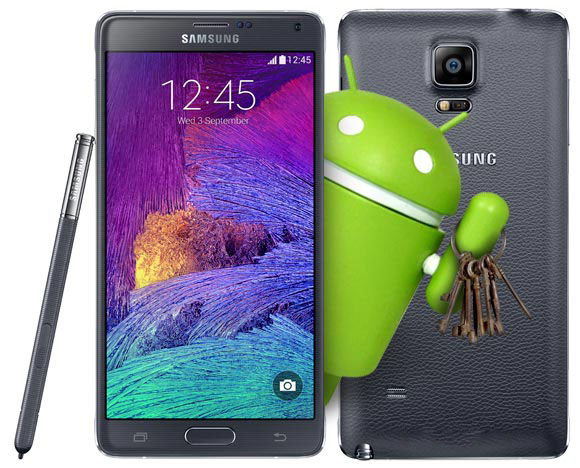
The Samsung Galaxy Note 4 is about to make its international debut and already the company is issuing the first software update for the device. The firmware number of the latest update is XXU1ANJ4 and at 36MB it is quite small.
That's because it's quite specific and aims at improving battery performance as well as overall stability. Galaxy Note 4's battery does excellently with an endurance rating of 87 hours. With the latest update though, you should expect the Galaxy Note 4 to do even better than that.
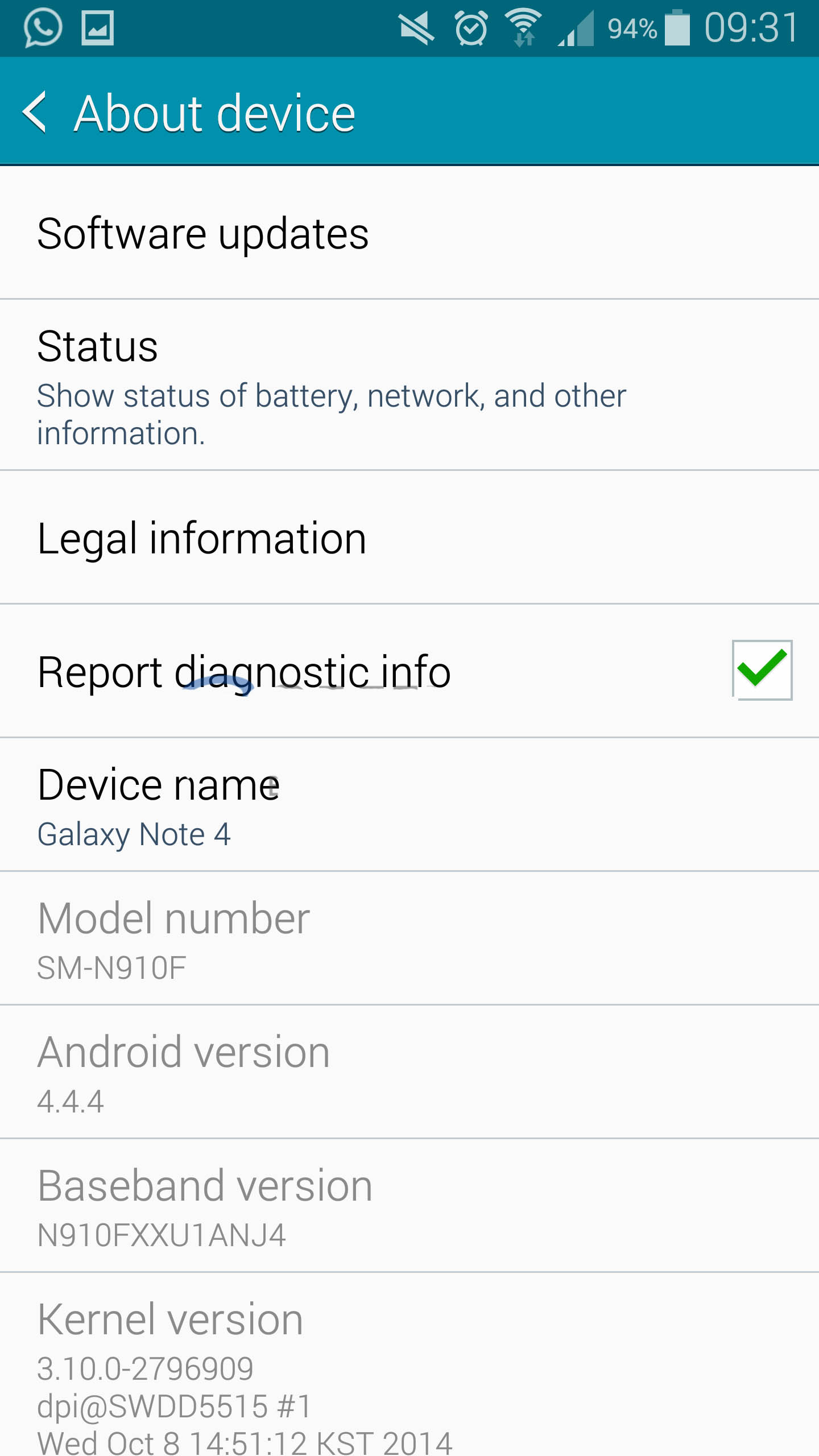
Samsung is already distributing the update to all Galaxy Note 4 units and expect it to become instantly available as soon as the phone launches in its respective markets. In the UK, Samsung recently announced the phone will be delayed until October,17th and it will cost £575 off-contract.
© 2023 YouMobile Inc. All rights reserved

